Take Me to The Recipes
Bahrain, a jewel in the Persian Gulf, beckons with a rich tapestry of culture, history, and, of course, the delectable Bahrain food on offer. This island nation, known for its warm hospitality and picturesque landscapes, boasts a fascinating blend of influences from the Middle East, India, and Persia.
As we delve into the heart of Bahraini culinary delights, we’ll explore the country’s history, the impact of its climate and geography on its cuisine, traditional dishes, health implications, and, most importantly, the national dish that encapsulates the essence of Bahrain food.
Embark on a flavorful journey through Bahrain’s diverse culinary landscape. From historical influences to the health implications of its cuisine, discover the essence of Bahraini food and tantalizing recipes that beckon your taste buds.
Prepare to be whisked away on a gastronomic adventure as we unravel the secrets behind Bahraini cuisine, exploring traditional dishes, understanding the historical backdrop, and discovering the unique flavors that define this culinary tapestry.
Bahraini Food – Key Takeaways
- Historical Fusion: Bahrain’s cuisine reflects a fascinating fusion of Middle Eastern, Indian, and Persian influences, a testament to its rich history.
- Climate’s Culinary Influence: The island’s climate and geography significantly shape its culinary offerings, creating a unique blend of flavors.
- Essence of Tradition: Bahraini food recipes hold the essence of tradition, passed down through generations, preserving cultural identity.
- Health Considerations: While indulging in the delicious fare, it’s crucial to understand the health implications of Bahraini cuisine.
- National Dish Pride: Bahrain takes immense pride in its national dish, a symbol of unity and cultural heritage.
- Ingredient Exploration: Dive into the diverse ingredients that contribute to the rich flavors of Bahraini cuisine.
- Home Cooking Adventure: Unleash your inner chef with Bahraini recipes that promise to recreate the authentic flavors in your kitchen.
Take Me to The Recipes
Where is Bahrain?

The Kingdom of Bahrain is a Middle East island country situated in the Persian Gulf between Saudi Arabia and Qatar, with Iran lying 124 nautical miles to the north.
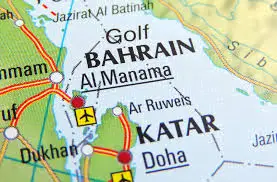
Index of Contents
- Take Me to The Recipes
- More Articles for Your Pleasure
- 10 Fascinating Facts about Bahrain
- Bahrain’s History and the Affect It Has Had on Bahraini Cuisine
- How Bahrain’s Climate and Geography Has Influenced Bahraini Food
- Understanding the Essence of Bahraini Food Recipe
- Traditional Bahraini Food
- What Are the Health Implications of Bahrain Cuisine?
- Bahrain National Dish
- Exploring Bahrain Food Ingredients: The Flavors of Bahraini Food Cuisine
- Bahraini Recipes – Great Examples to Try at Home
- Frequently Asked Questions
- Conclusion
More Articles for Your Pleasure
- North and South American Cuisine – A Culinary Expedition
- European Cuisine: Savor the Continent’s Best Culinary Secrets!
- African Cuisine: Discover the Bold Flavors & Global Charm!
- Asian Cuisine Unlock its Secrets – Taste, Health & Global Influence!
- Oceania Cooking: A Culinary Journey Through the Pacific
Savor iconic Bahrain Dishes – Click on each tantalizing picture to open up the Recipe.
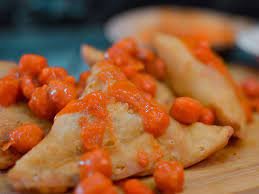
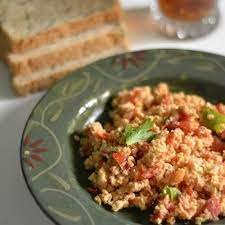
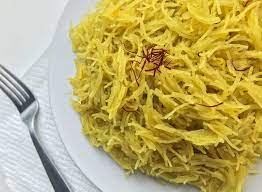
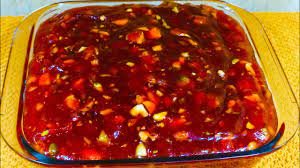
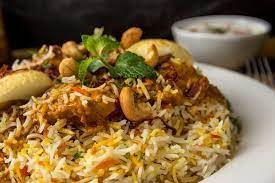
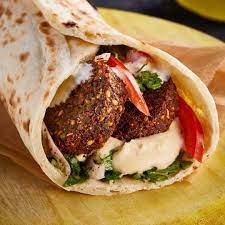
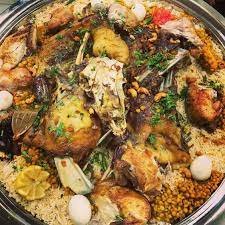
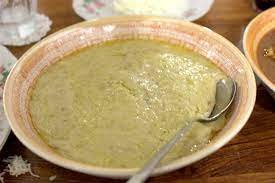
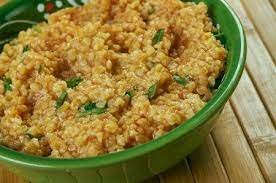

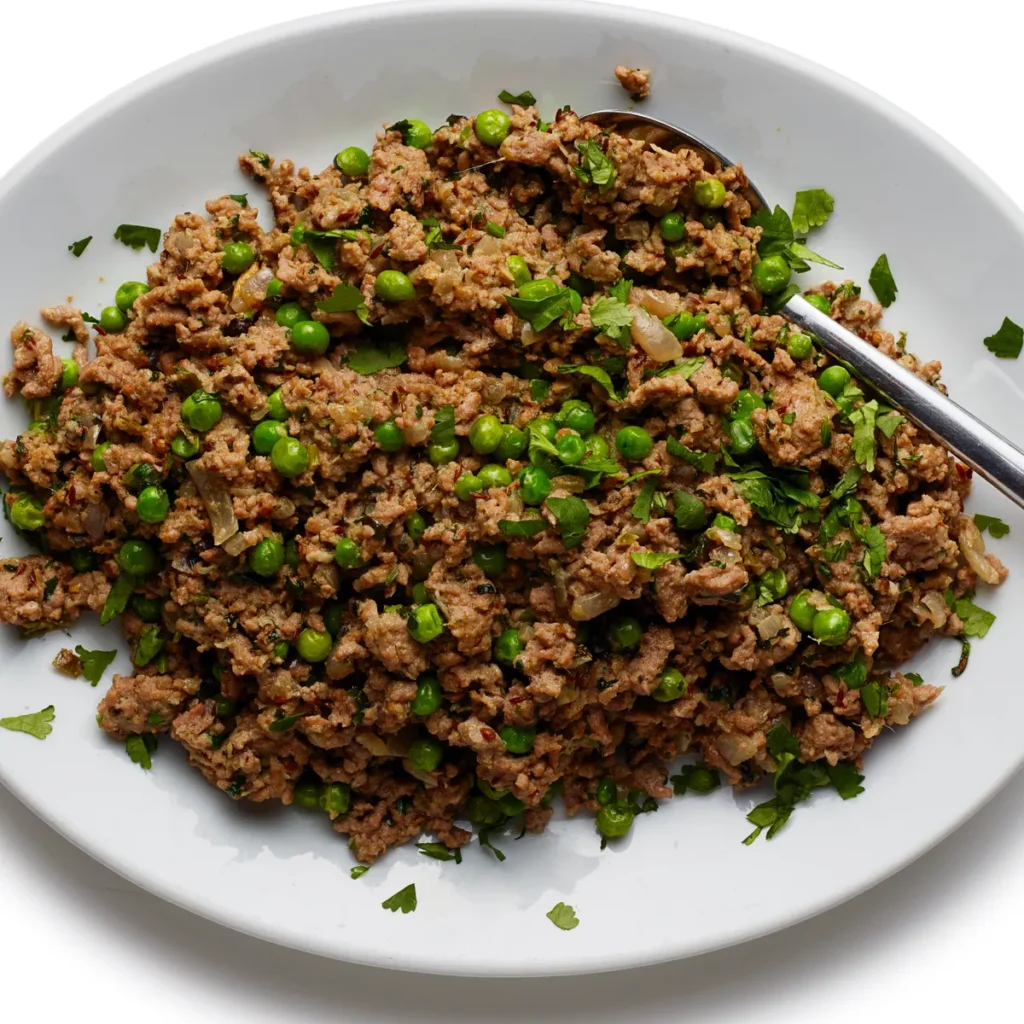

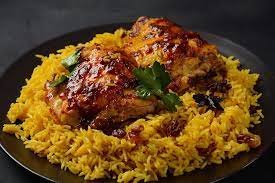
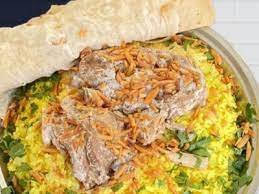
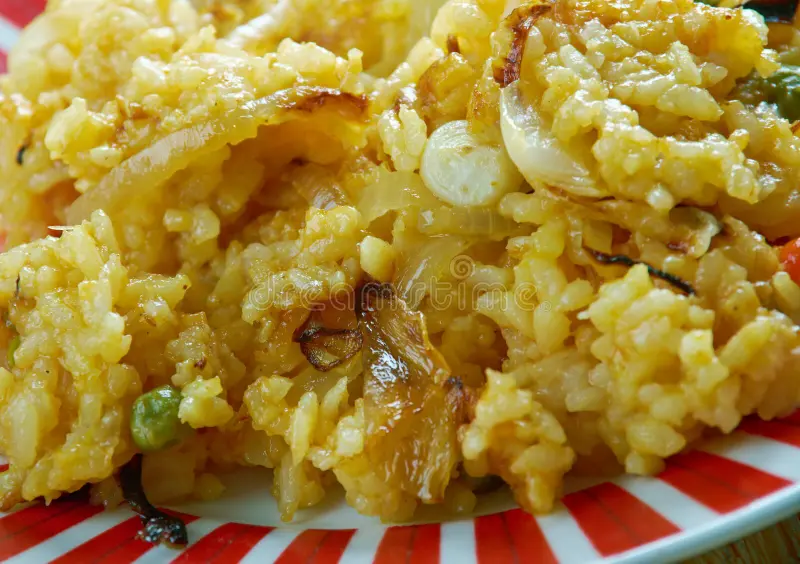
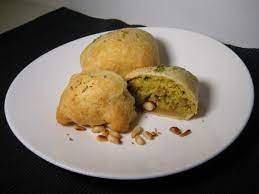
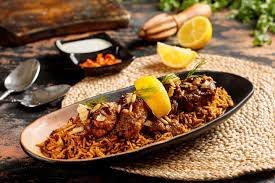
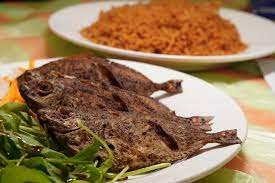
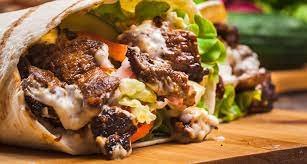
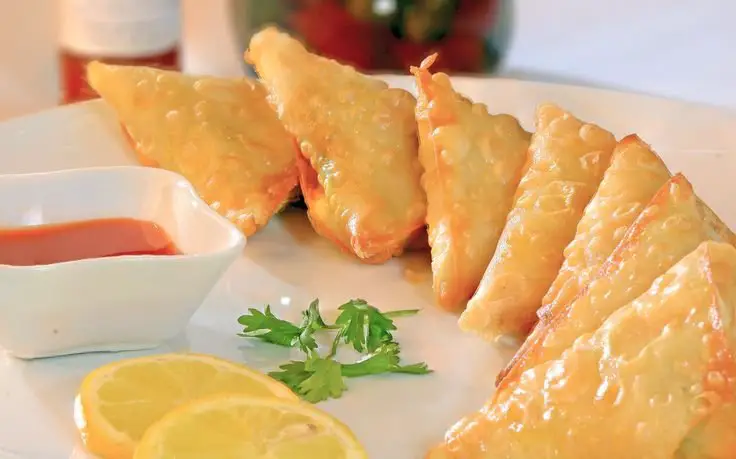

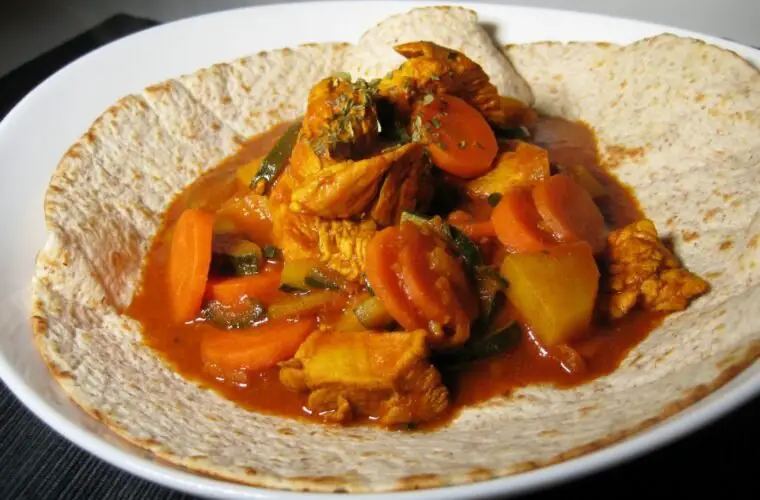
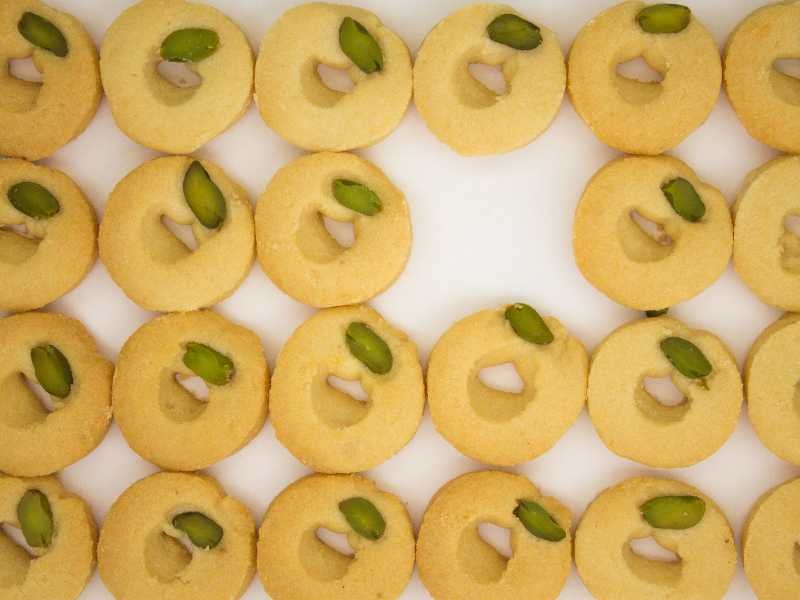
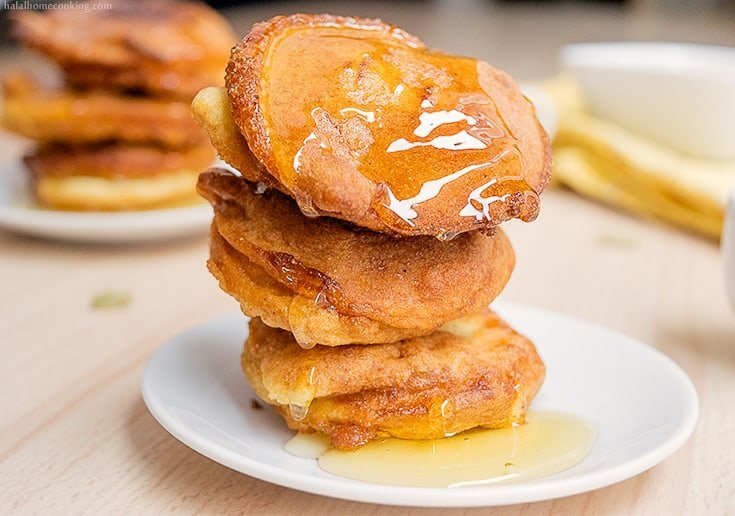
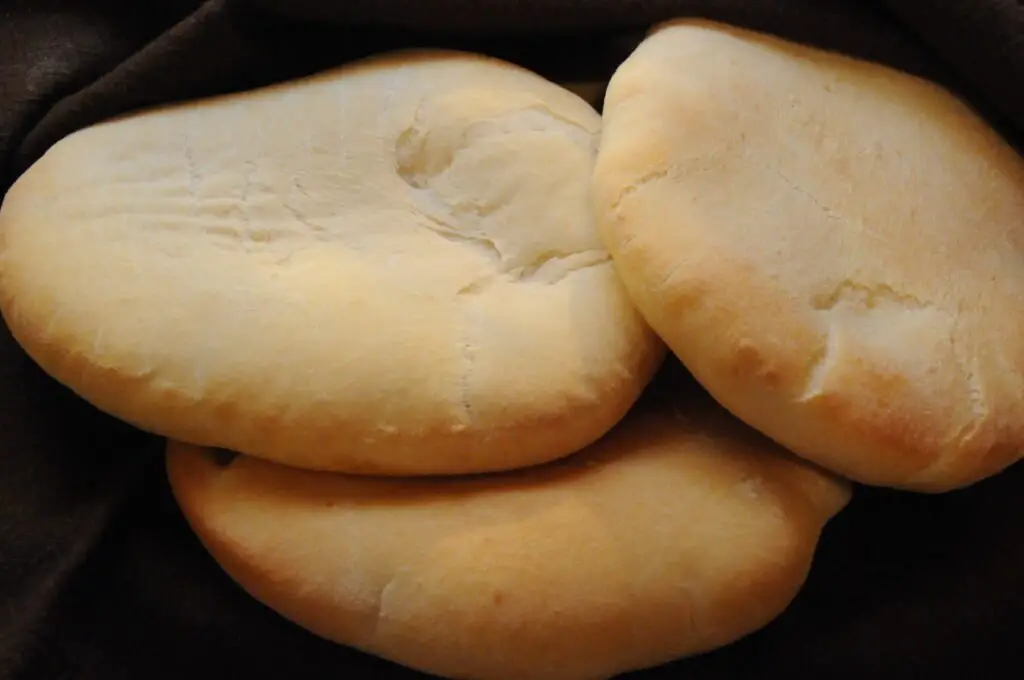
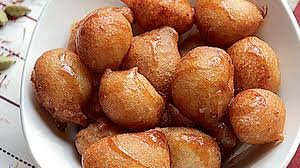
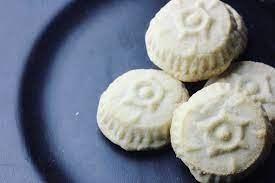

10 Fascinating Facts about Bahrain

From fascinating facts to curious laws, let’s explore 10 intriguing insights into the captivating world of Bahrain.
The Land of Dilmun
- Bahrain is believed to be the ancient land of Dilmun, mentioned in Sumerian and Babylonian texts as a paradise of abundance and fertility. This rich historical legacy has shaped Bahrain’s identity as a cradle of civilization in the Arabian Peninsula.
Bahraini Pearls

- Historically known as the “Pearl of the Gulf,” Bahrain was renowned for its thriving pearl industry, which was once a major driver of the country’s economy. While pearl diving has declined in modern times, Bahrain’s pearl heritage remains a symbol of its maritime heritage.
The World’s Largest Underwater Theme Park

- Bahrain is home to the world’s largest underwater theme park, located off the coast of Amwaj Islands. The park features a submerged Boeing 747 aircraft and artificial coral reefs, offering a unique diving experience for adventure enthusiasts.
Camel Beauty Contests
- Camel beauty contests are a popular pastime in Bahrain, where breeders compete to showcase their finest camels in categories such as “Best in Show” and “Most Beautiful Camels.” These contests attract crowds of spectators and highlight the cultural significance of camels in Bahraini society.
The Tree of Life
- The Tree of Life is a solitary mesquite tree that stands amidst the desert landscape of Bahrain. Believed to be over 400 years old, the tree has become a symbol of resilience and endurance in the face of adversity, as it thrives despite the harsh desert conditions.
Traditional Pearl Diving Songs
- Bahrain has a rich tradition of pearl diving songs, known as “fijiri,” which are sung by pearl divers to coordinate their movements and keep spirits high during long hours at sea. These haunting melodies capture the essence of Bahrain’s maritime heritage and cultural identity.
World’s First Indoor Skyscraper

- The Bahrain World Trade Center is home to the world’s first fully integrated wind turbine system within a skyscraper. This innovative design harnesses wind energy to generate electricity, making the building both eco-friendly and architecturally groundbreaking.
Respect for Dates
- Dates hold special significance in Bahraini culture, symbolizing hospitality and generosity. It is customary for Bahrainis to offer dates to guests as a gesture of welcome and goodwill, reflecting the country’s tradition of hospitality.
Friday as the Official Weekend
- Bahrain observes Friday as the official weekend, aligning with Islamic tradition. The weekend begins on Friday, the day of communal prayer in Islam, and extends through Saturday, providing residents with a unique rhythm of work and leisure.
Strict Penalties for Public Indecency

- Bahrain enforces strict penalties for public indecency, including fines and imprisonment. Visitors should be mindful of local customs and dress codes, particularly when visiting religious sites and public spaces, to avoid inadvertently violating Bahraini law.
Embrace the Charm of Bahrain
From its ancient heritage to its modern marvels, Bahrain offers a captivating blend of tradition, innovation, and cultural diversity. As we delve into the fascinating facts and quirks of Bahrain, let us embrace the charm of this dynamic island nation and celebrate its unique contributions to the global tapestry of history and culture.
Bahrain’s History and the Affect It Has Had on Bahraini Cuisine
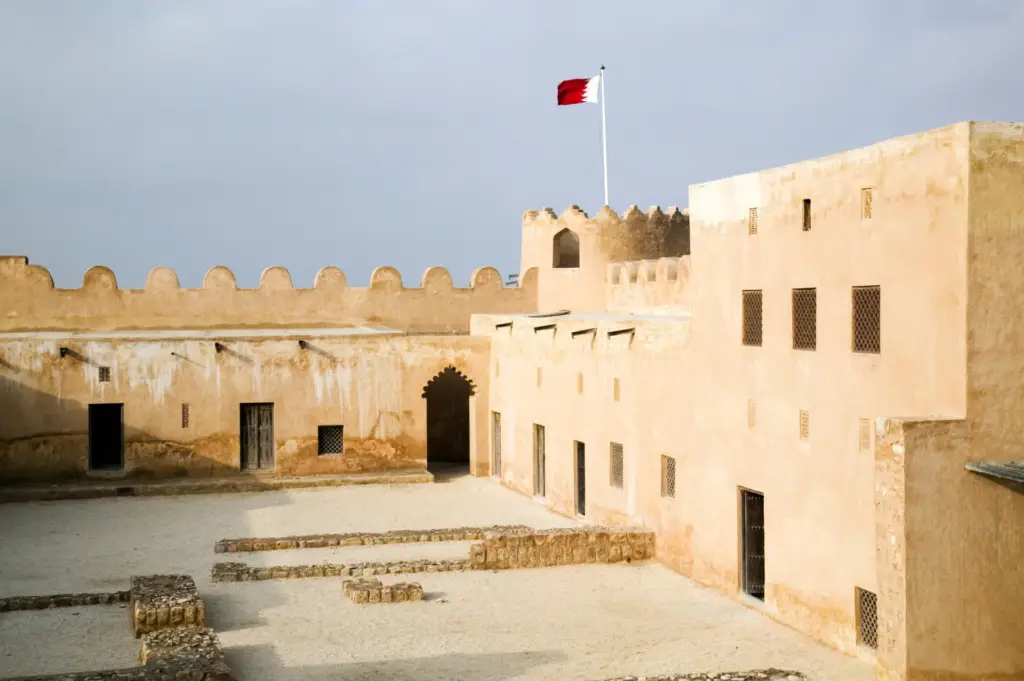
Its history and cuisine have been influenced by various cultures and civilizations that have interacted with it over the centuries. Here are some of the main effects that Bahrain’s history has had on its cuisine:
Ancient trade
Bahrain was an important trading center in ancient times, connecting the civilizations of Mesopotamia, India, and Arabia. It was also known as Dilmun, a mythical paradise in some ancient texts.
Pearl industry
Bahrain was famous for its pearl industry, which flourished from the 2nd millennium BCE until the 20th century CE. Pearls were a major source of income and prestige for Bahrainis, and they also influenced their cuisine.
For example, Bahrainis developed a tangy fish sauce called mahyawa, which was made from fermented fish heads and guts, a by-product of the pearl industry. Mahyawa is still a popular condiment in Bahraini cuisine, especially with bread and fish dishes.
British protection

Bahrain became a British protectorate in 1861, after signing a treaty with the British government. This gave Bahrain some security and stability, but also limited its sovereignty and independence.
Oil Discovery

Bahrain discovered oil in 1932, becoming the first country in the Persian Gulf to do so. Oil brought wealth and development to Bahrain, as well as many foreign workers and visitors.
Oil also changed the lifestyle and diet of Bahrainis, as they had more access to modern amenities, imported food, and fast food. Bahraini cuisine became more diverse and cosmopolitan, but also more prone to health problems, such as obesity, diabetes, and heart disease.
Bahrain’s history and cuisine are intertwined, as they reflect the country’s unique location, culture, and identity. Bahraini cuisine is a blend of ancient and modern, local and foreign, simple and sophisticated.
It offers a variety of flavors, textures, and aromas that can appeal to any palate. If you want to learn more about Bahrain’s history and cuisine, you can visit these websites:
References
- Bahraini cuisine – Wikipedia,
- Bahraini cuisine – Wikiwand,
- History of Bahrain | Events, People, Dates, & Facts | Britannica.
How Bahrain’s Climate and Geography Has Influenced Bahraini Food
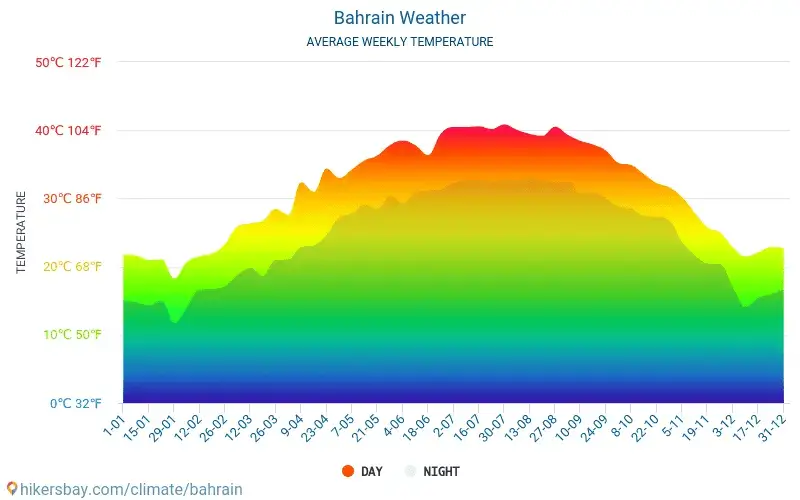
Bahrain’s climate and geography have influenced its food in several ways. Here are some of the main effects:
Seafood
Bahrain is an island nation surrounded by the Persian Gulf, which provides a rich source of fish and other seafood.
Bahrainis consume fried fish on a daily basis, and also use fish sauce (mahyawa) as a condiment. Some of the common fish varieties are hamour (grouper), safi (rabbitfish), and chanad (mackerel). Bahrainis also enjoy shrimp, crab, lobster, and oysters.
Spices
Bahrain was an important trading center in ancient times, connecting the civilizations of Mesopotamia, India, and Arabia. As a result, Bahraini cuisine incorporates spices and ingredients from different regions, such as rice, dates, saffron, cardamom, turmeric, cinnamon, and cloves.
These spices add flavor and color to the dishes, and also help preserve the food in the hot and humid climate.
Fruits and vegetables
Bahrain has a hot and arid climate, with scarce rainfall and limited arable land. Therefore, fruits and vegetables are not very abundant in the traditional diet, except for some root vegetables (potatoes, beets, carrots), leafy greens (spinach, parsley, mint), and dates.
However, Bahrainis also import fruits and vegetables from other countries, such as oranges, bananas, apples, tomatoes, cucumbers, and eggplants. Fruits are often eaten fresh or dried, while vegetables are often cooked or pickled.
Bahraini cuisine is a reflection of the country’s climate and geography, as well as its history and culture. It offers a variety of dishes that are simple, hearty, and flavorful.
Understanding the Essence of Bahraini Food Recipes

Forget the predictable – Bahraini food is a symphony of unexpected ingredients, subtle spices, and a delightful fusion of cultural influences. Here’s why it deserves a spot on your culinary adventure list:
A Crossroads of Flavors
Bahrain’s strategic location as a trading hub for centuries has left an indelible mark on its cuisine. Imagine a vibrant blend of Arabian, Persian, Indian, and African influences, all woven together to create a truly distinct flavor profile.
Dried limes (loomi) add a unique sour tang to stews, while saffron lends a touch of luxury to rice dishes. This cultural exchange of spices and ingredients has resulted in a cuisine that’s both complex and incredibly satisfying.
A Celebration of the Sea
Surrounded by the Arabian Gulf, Bahrain boasts an abundance of fresh seafood. Imagine succulent fish like hammour (grouper) cooked to perfection with a touch of turmeric and black pepper, served with fluffy basmati rice.
Seafood stews brimming with shrimp, mussels, and calamari are a delightful explosion of flavors. This focus on fresh catches ensures that every bite is a celebration of the bounty of the sea.
Dates: A Sweet and Savory Staple
Dates are not just a dessert in Bahrain – they’re a culinary cornerstone. These naturally sweet fruits are enjoyed fresh, dried, and even incorporated into savory dishes.
Imagine hearty stews like machboos, featuring lamb or chicken simmered with rice and vegetables, all sweetened with the subtle caramel notes of dates. Date molasses adds richness to sauces, while date paste (dibs) is a popular spread for flatbreads.
This versatility of dates adds a unique sweetness and depth of flavor to Bahraini cuisine.
A World of Spices, Used with Finesse
Unlike some of its neighbors, Bahraini cuisine doesn’t overwhelm with heat. Instead, it employs a subtle touch of spices to create layers of flavor. Cardamom, cumin, coriander, and turmeric add warmth and complexity to dishes without overpowering the palate.
Freshly squeezed lime juice adds a refreshing tang, while saffron brings a touch of floral elegance. This nuanced approach to spices allows the natural flavors of the ingredients to shine through.
Comfort Food with a Twist
Bahrain excels in comfort food with a unique twist. Take khabeesa, a dish made from bulgur wheat simmered in milk and clarified butter. Unlike its blander cousin bulgur pilaf, khabeesa is infused with rosewater and cardamom, offering a subtle sweetness and a hint of floral aroma.
Harees, another comforting dish, features wheat berries cooked with meat and topped with cinnamon sugar – a delightful combination of savory and sweet. These comforting dishes showcase the Bahraini love for familiar textures with unexpected flavor profiles.
Embrace the unexpected and embark on a delicious journey through the heart of Bahrain!
Traditional Bahraini Food
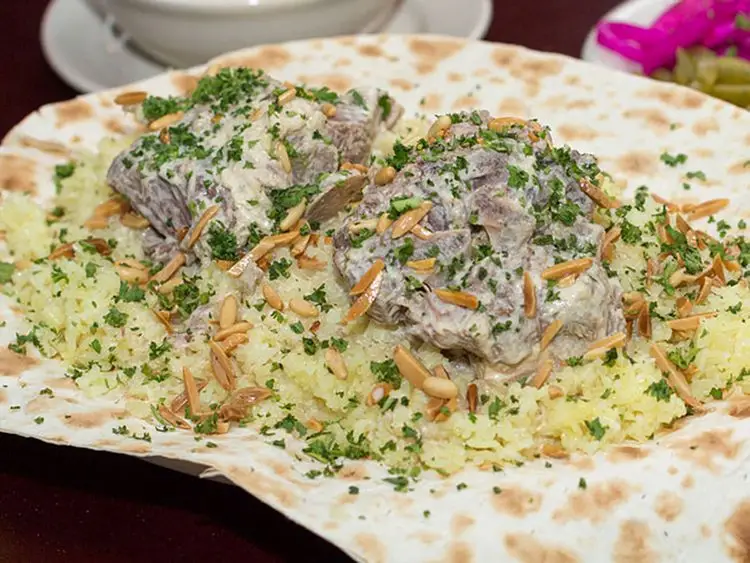
Bahrain’s culinary traditions are deeply rooted in communal gatherings and celebrations. Majlis, a communal dining space, witnesses the joyous sharing of traditional dishes. Mansaf, a dish featuring lamb cooked in a yogurt sauce, and Muhammar, a sweet rice dish, are staples at festive occasions.
The emphasis on communal dining reflects Bahrain’s commitment to hospitality and the unifying power of shared meals.
What Are the Health Implications of Bahrain Cuisine?
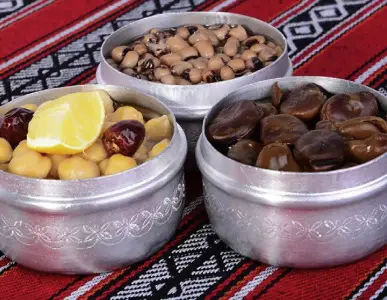
Bahrain cuisine is a blend of ancient and modern, local and foreign, simple and sophisticated. It offers a variety of dishes that are based on seafood, spices, fruits, and vegetables. However, like any cuisine, it also has some health implications that depend on the quantity and quality of the food consumed. Here are some of the possible health implications of Bahrain cuisine:
Positive effects
Bahrain cuisine can provide a balanced diet, as it contains carbohydrates, proteins, fats, vitamins, minerals, and fiber. Seafood is a good source of omega-3 fatty acids, which can lower the risk of cardiovascular diseases and improve brain function.
Spices can add flavor and color to the dishes, and also have anti-inflammatory, antioxidant, and antimicrobial properties. Fruits and vegetables can provide vitamins, antioxidants, and phytochemicals, which can prevent chronic diseases, such as cancer, diabetes, and inflammation.
Negative effects
Bahrain cuisine can also pose some health risks, such as high consumption of animal fats, salt, and sugar. Animal fats, such as lard, butter, and sour cream, are rich in saturated fats and cholesterol, which can increase the risk of cardiovascular diseases, such as high blood pressure, atherosclerosis, and heart attack.
Salt and sugar are used to preserve and flavor food, but excessive intake can cause problems such as high blood pressure, obesity, diabetes, tooth decay, and kidney damage.
Bahrain cuisine can be enjoyed in moderation, but it is advisable to limit the intake of animal fats, salt, and sugar, and to increase the intake of fruits and vegetables. It is also recommended to choose lean meats, such as poultry and fish, over fatty meats, such as pork and sausage.
Additionally, it is important to drink enough water and exercise regularly to maintain a healthy lifestyle.
Bahrain National Dish

The heart of Bahraini cuisine beats in its national dish, Harees. This savory porridge, made from wheat and meat, symbolizes unity and shared heritage.
Traditionally prepared during Ramadan, Harees embodies the spirit of communal harmony, inviting people to come together in celebration.
Its simple yet soulful preparation makes it a cherished part of Bahrain’s culinary identity.
Exploring Bahrain Food Ingredients: The Flavors of Bahraini Food Cuisine
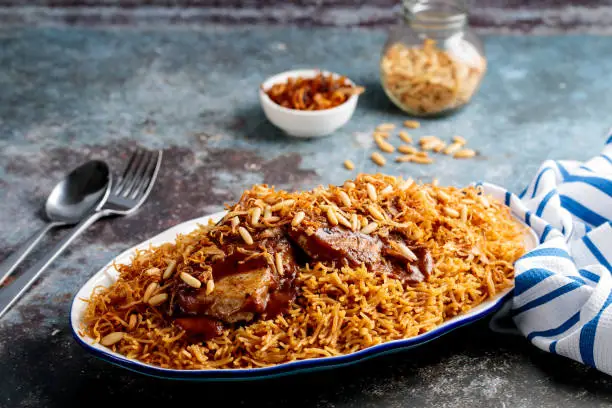
Bahraini cuisine’s distinct flavors arise from a melange of ingredients. Fragrant spices like cardamom, cumin, and cinnamon infuse dishes with warmth, while the use of fresh herbs like mint and parsley adds vibrancy.
Seafood, an abundant resource, features prominently, with dishes like Sayadiya showcasing Bahrain’s love for fish.
The interplay of sweet and savory, coupled with skillful use of spices, creates a culinary symphony that is uniquely Bahraini.
Bahraini Recipes – Great Examples to Try at Home
Bahraini cuisine beckons adventurous cooks to recreate its magic at home. Begin your culinary journey with Mansaf, a traditional lamb dish, or venture into the world of desserts with Umm Ali, a sweet bread pudding.
For a snack, try making Samboosa, a delightful pastry filled with spiced meat or vegetables. These recipes encapsulate the essence of Bahraini food, allowing you to savor the flavors of this island nation in the comfort of your kitchen.
Bahrain Food – Aloo Basheer

Aloo Basheer: A Culinary Gem from Bahrain’s Culinary Tapestry
History and Background: Aloo Basheer is a cherished Bahraini dish that reflects the island’s culinary prowess. Originating from the heart of Bahrain’s cultural heritage, this dish is a testament to the fusion of flavors and influences that have shaped the region’s cuisine. Its roots can be traced back to the rich history of trade and cultural exchange that defines Bahrain’s past.
Region of Origin: Aloo Basheer has its roots deeply embedded in Bahraini cuisine, showcasing the culinary ingenuity of the region. This potato-based delight has become a staple in Bahraini households, served on special occasions and family gatherings.
Bahrain Food – Aloo Basheer Ingredients:
- 500g potatoes, peeled and diced
- 1 large onion, finely chopped
- 2 tomatoes, chopped
- 2 green chilies, finely chopped
- 3 cloves of garlic, minced
- 1 tsp ginger, grated
- 1 tsp cumin powder
- 1 tsp coriander powder
- 1/2 tsp turmeric powder
- 1/2 tsp red chili powder
- Salt to taste
- 2 tbsp vegetable oil
- Fresh coriander leaves for garnish
Bahrain Food – Aloo Basheer Recipe:
Ingredients Preparation:
- Prepare Potatoes: Peel and dice the potatoes into bite-sized cubes.
- Chop Vegetables: Finely chop the onion, tomatoes, green chilies, and mince the garlic.
- Grate Ginger: Grate the ginger for added flavor.
Cooking Steps:
- Sauté Aromatics: In a pan, heat the vegetable oil. Add chopped onions, minced garlic, and grated ginger. Sauté until the onions are golden brown.
- Add Spices: Add cumin powder, coriander powder, turmeric powder, red chili powder, and salt. Mix well to form a fragrant base.
- Add Potatoes: Incorporate the diced potatoes into the spice mixture, ensuring they are well-coated.
- Cook Tomatoes: Add chopped tomatoes and green chilies. Cook until the tomatoes break down and the mixture forms a thick gravy.
- Simmer: Cover the pan and let the Aloo Basheer simmer on low heat until the potatoes are tender.
- Garnish and Serve: Garnish with fresh coriander leaves. Serve hot.
Servings: 4 people
Cooking Time: 30 minutes
Calories: Approximately 200 calories per serving (calculated based on average ingredient values).
Aloo Basheer encapsulates the soul of Bahraini cuisine, blending spices, vegetables, and tradition into a delightful dish that brings people together around the dining table.
Bahrain Food – Baid Tamat
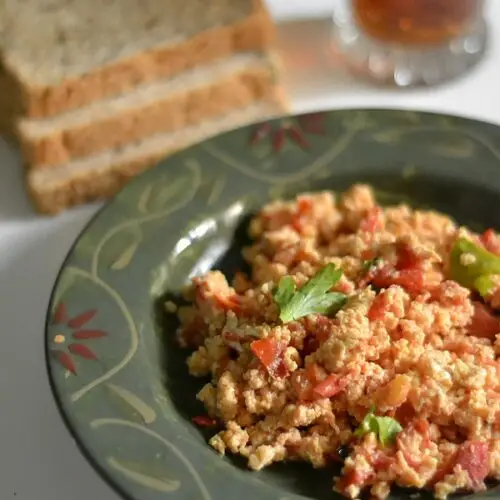
Baid Tamat: A Bahraini Culinary Heritage
History and Background: Baid Tamat, a traditional Bahraini dish, is deeply rooted in the culinary heritage of the region. This flavorful egg and tomato dish have been a staple in Bahraini households for generations, representing the intersection of local ingredients and cultural influences.
Originating from Bahrain’s rich history of trade and diverse culinary traditions, Baid Tamat stands as a testament to the island’s gastronomic excellence.
Region of Origin: This delectable dish is a proud creation of Bahraini kitchens, reflecting the region’s love for simple yet flavorful combinations. Bahrain’s unique cultural blend and historical influences contribute to the distinct taste and preparation of Baid Tamat.
Bahrain Food – Baid Tamat Ingredients:
- 4 eggs
- 4 tomatoes, finely chopped
- 1 onion, finely chopped
- 2 green chilies, chopped
- 2 cloves of garlic, minced
- 1 tsp cumin powder
- 1 tsp coriander powder
- 1/2 tsp turmeric powder
- Salt to taste
- 2 tbsp vegetable oil
- Fresh coriander leaves for garnish
Bahrain Food – Baid Tamat Recipe:
Ingredients Preparation:
- Chop Vegetables: Finely chop the onion, tomatoes, green chilies, and mince the garlic.
- Whisk Eggs: In a bowl, whisk the eggs until well beaten.
Cooking Steps:
- Sauté Aromatics: In a pan, heat vegetable oil. Add chopped onions, green chilies, and minced garlic. Sauté until the onions are translucent.
- Add Spices: Incorporate cumin powder, coriander powder, turmeric powder, and salt. Stir to create a fragrant base.
- Tomato Blend: Add the finely chopped tomatoes to the spice mixture. Cook until the tomatoes break down and form a thick gravy.
- Add Eggs: Pour the beaten eggs into the tomato mixture. Stir gently to combine, allowing the eggs to cook and blend with the tomatoes.
- Simmer: Cover the pan and let the Baid Tamat simmer on low heat until the eggs are cooked through.
- Garnish and Serve: Garnish with fresh coriander leaves. Serve hot.
Servings: 2-3 people
Cooking Time: 20 minutes
Calories: Approximately 180 calories per serving (calculated based on average ingredient values).
Baid Tamat encapsulates the essence of Bahraini comfort food, offering a delightful harmony of flavors and textures that have made it a beloved part of the island’s culinary tradition.
Bahrain Food – Bahraini Halawa

Bahraini Halawa: A Sweet Symphony of Bahrain’s Culinary Culture
History and Background: Bahraini Halawa, a sweet and indulgent treat, has deep roots in the culinary traditions of Bahrain. Originating from the cultural melting pot that defines the region, this dessert is a testament to the rich history and influences that have shaped Bahraini cuisine.
The meticulous preparation and exquisite flavors of Bahraini Halawa make it a symbol of celebration and hospitality in the island nation.
Region of Origin: Bahraini Halawa is a product of Bahrain’s vibrant culinary landscape. Influenced by Arabian, Persian, and Indian flavors, this dessert reflects the cultural diversity that defines Bahrain.
Often served during special occasions and family gatherings, Bahraini Halawa holds a special place in the hearts of locals.
Bahrain Food – Bahraini Halawa Ingredients:
- 1 cup semolina
- 1 cup sugar
- 1 cup water
- 1/2 cup ghee (clarified butter)
- 1/2 cup tahini
- 1/2 cup crushed walnuts or almonds
- 1 tsp ground cardamom
- 1/2 tsp rose water (optional)
Bahrain Food – Bahraini Halawa Recipe:
Ingredients Preparation:
- Prepare Semolina Mixture: In a bowl, mix semolina, ghee, and tahini until well combined. Set aside.
- Make Sugar Syrup: In a saucepan, combine sugar and water. Bring to a boil, then simmer until it forms a syrupy consistency. Add ground cardamom and rose water if using.
Cooking Steps:
- Combine Mixtures: Slowly add the sugar syrup to the semolina mixture, stirring continuously to avoid lumps.
- Cook Semolina Mixture: Transfer the combined mixture to a non-stick pan. Cook on low heat, stirring constantly until it thickens and pulls away from the edges.
- Add Nuts: Add crushed walnuts or almonds to the mixture, incorporating them evenly.
- Shape and Cool: Remove from heat and shape the mixture into a desired form, typically a rectangular or square shape. Allow it to cool.
- Slice and Serve: Once cooled, slice the Bahraini Halawa into individual servings. Serve at room temperature.
Servings: 8-10 people
Cooking Time: 30 minutes
Calories: Approximately 300 calories per serving (calculated based on average ingredient values).
Bahraini Halawa epitomizes the sweetness of Bahraini hospitality and is a delightful conclusion to any meal, capturing the essence of the island’s culinary artistry.
Bahrain Food – Balaleet
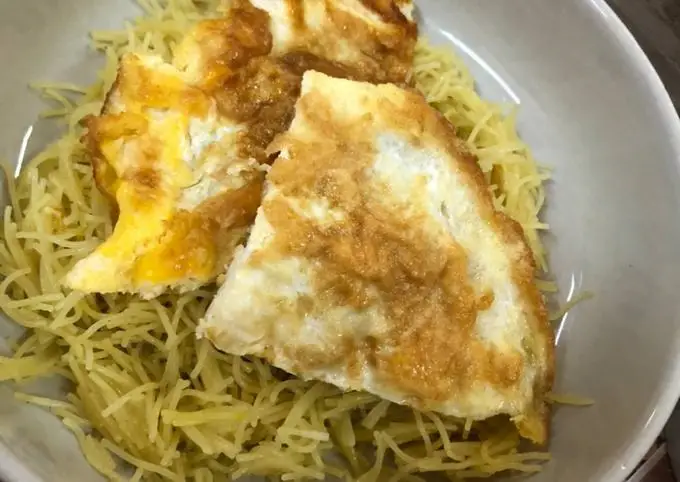
Balaleet: Bahrain’s Sweet and Savory Breakfast Tradition
History and Background: Balaleet, a beloved dish in Bahrain, is a unique blend of sweet and savory flavors, making it a quintessential breakfast choice for locals. With influences from Arabian and Persian culinary traditions, Balaleet represents the rich history of Bahrain as a crossroads of cultures.
Its popularity extends to being a dish often served during special occasions and festive gatherings.
Region of Origin: This delectable dish is firmly rooted in Bahraini culture, offering a distinctive breakfast experience. The combination of vermicelli, eggs, and spices creates a delightful flavor profile that has become a symbol of Bahraini hospitality.
Balaleet’s presence on breakfast tables across the island showcases its significance in local culinary customs.
Bahrain Food – Balaleet Ingredients:
- 200g vermicelli
- 4 eggs
- 1 large onion, finely chopped
- 1/4 cup sugar
- 1/4 cup raisins
- 1/4 cup sliced almonds
- 1/2 tsp ground cardamom
- 1/4 tsp saffron strands (soaked in 1 tbsp warm milk)
- Salt to taste
- 2 tbsp ghee (clarified butter)
- Fresh coriander leaves for garnish (optional)
Bahrain Food – Balaleet Recipe:
Ingredients Preparation:
- Prepare Vermicelli: Boil the vermicelli until al dente. Drain and set aside.
- Soak Saffron: Soak saffron strands in warm milk and set aside.
- Beat Eggs: In a bowl, beat the eggs and set aside.
- Toast Almonds: In a dry pan, toast sliced almonds until golden brown.
Cooking Steps:
- Sauté Onions: In a large pan, heat ghee and sauté finely chopped onions until translucent.
- Add Eggs: Pour beaten eggs into the pan with onions. Stir continuously to scramble the eggs.
- Add Vermicelli: Incorporate boiled vermicelli into the egg and onion mixture. Mix well.
- Sweeten the Mix: Sprinkle sugar, raisins, and ground cardamom over the mixture. Mix until sugar dissolves.
- Add Saffron: Pour the saffron-soaked milk over the mixture, infusing it with a golden hue.
- Final Touch: Garnish with toasted almonds and, if desired, fresh coriander leaves.
- Serve Warm: Balaleet is best served warm, offering a delightful balance of sweet and savory flavors.
Servings: 4 people
Cooking Time: 25 minutes
Calories: Approximately 350 calories per serving (calculated based on average ingredient values).
Balaleet stands as a testament to Bahrain’s culinary ingenuity, offering a breakfast experience that harmonizes diverse flavors into a single, delicious dish.
Bahrain Food – Biryani
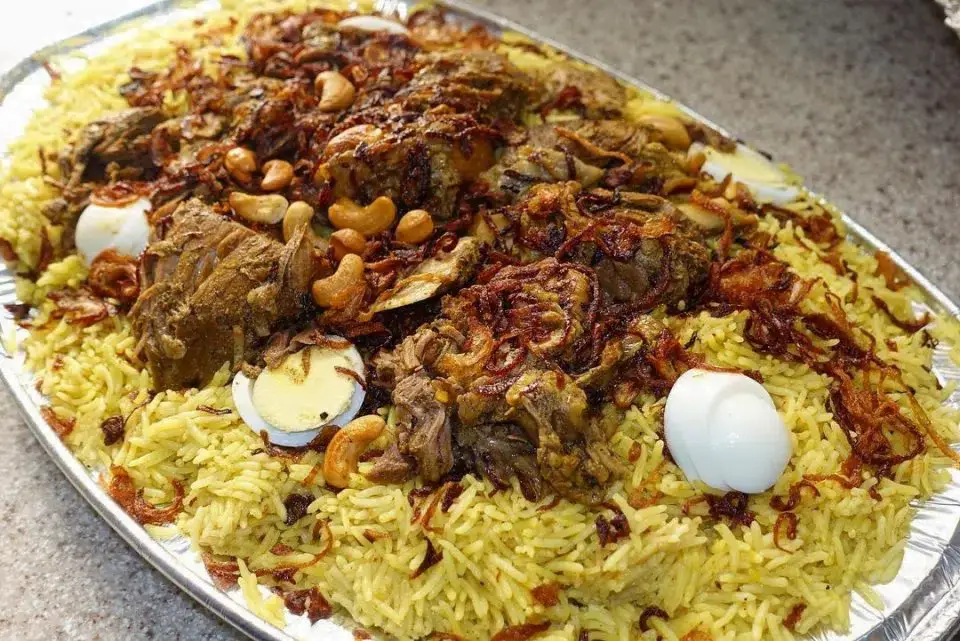
Biryani: Bahrain’s Flavorful Culinary Extravaganza
History and Background: Biryani, a culinary masterpiece that has transcended borders, has found a special place in Bahrain’s vibrant food culture. With roots in Persian and Indian cuisine, Biryani has been embraced by Bahrain, reflecting the historical trade connections that shaped the island’s gastronomy.
This aromatic and flavorful dish has become a symbol of celebration, often gracing tables during festive occasions and family gatherings.
Region of Origin: Bahrain’s Biryani is a testament to the island’s multicultural influences. Originating from the Indian subcontinent, Biryani has undergone adaptations unique to Bahrain, incorporating local spices and flavors.
The dish’s popularity extends beyond its cultural origins, making it a cherished part of Bahraini cuisine.
Bahrain Food – Biryani Ingredients:
- 2 cups basmati rice
- 500g chicken or lamb, cut into pieces
- 1 large onion, thinly sliced
- 1/2 cup plain yogurt
- 1/4 cup cooking oil or ghee
- 2 tomatoes, chopped
- 2 green chilies, chopped
- 1/4 cup chopped mint leaves
- 1/4 cup chopped coriander leaves
- 1/2 cup fried onions (for garnish)
- 1/2 cup raisins (optional)
- 1/4 cup cashews (optional)
- 1/2 tsp saffron strands (soaked in 2 tbsp warm milk)
- Biryani spice mix (cinnamon, cardamom, cloves)
- Salt to taste
Bahrain Food – Biryani Recipe:
Ingredients Preparation:
- Soak Rice: Wash and soak basmati rice for 30 minutes.
- Marinate Meat: Mix chicken or lamb pieces with yogurt, biryani spice mix, and salt. Marinate for at least 1 hour.
Cooking Steps:
- Parboil Rice: In a large pot, boil water and parboil the soaked rice until 70% cooked. Drain and set aside.
- Sauté Onions: In a separate pot, heat oil or ghee. Sauté thinly sliced onions until golden brown.
- Add Meat: Add marinated meat to the pot and cook until it changes color.
- Layering: Layer the partially cooked rice over the meat. Sprinkle chopped tomatoes, green chilies, mint leaves, and coriander leaves.
- Add Saffron: Drizzle the saffron-soaked milk over the rice.
- Dum Cooking: Cover the pot with a tight lid or seal with dough to trap steam. Cook on low heat for 20-25 minutes.
- Garnish and Serve: Garnish with fried onions, raisins, and cashews. Serve hot.
Servings: 4-6 people
Cooking Time: 1 hour
Calories: Approximately 500 calories per serving (calculated based on average ingredient values).
Biryani, with its aromatic spices and perfectly cooked rice, exemplifies the cultural fusion that defines Bahrain’s culinary identity, offering a rich and indulgent dining experience.
Bahrain Food – Falafel
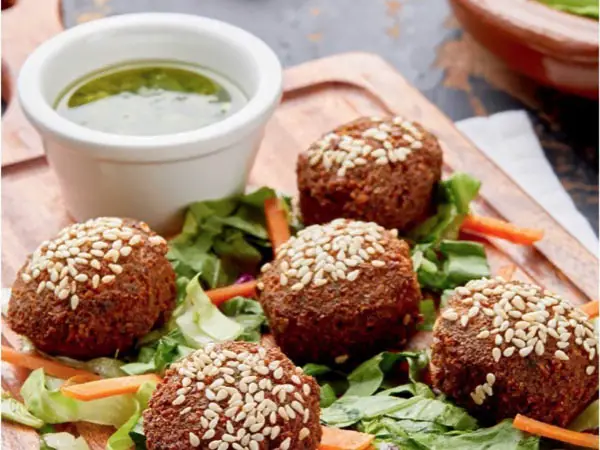
Falafel: Bahrain’s Crispy Chickpea Delight with Middle Eastern Roots
History and Background: Falafel, a beloved Bahraini snack, has deep-rooted historical ties to the Middle East. Originating from Egypt, falafel’s journey across the region has led it to become a cherished part of Bahrain’s culinary scene.
This crispy and flavorful dish has made its mark in Bahraini street food culture, reflecting the island’s openness to diverse gastronomic influences.
Region of Origin: Falafel has its origins in the Levant, specifically Egypt, and over time, it has become a popular street food item across the Middle East, including Bahrain.
The perfect blend of chickpeas, herbs, and spices makes Bahraini falafel a delightful and accessible treat for locals and visitors alike.
Bahrain Food – Falafel Ingredients:
- 2 cups dried chickpeas, soaked overnight
- 1 small onion, roughly chopped
- 3 cloves of garlic
- 1 cup fresh parsley, chopped
- 1 tsp ground cumin
- 1 tsp ground coriander
- 1/2 tsp baking soda
- Salt and pepper to taste
- Vegetable oil for frying
- 1/2 cup sesame seeds (optional, for coating)
Bahrain Food – Falafel Recipe:
Ingredients Preparation:
- Soak Chickpeas: Soak dried chickpeas overnight in plenty of water.
- Drain Chickpeas: Drain the soaked chickpeas thoroughly.
Cooking Steps:
- Blend Ingredients: In a food processor, combine soaked chickpeas, chopped onion, garlic, fresh parsley, ground cumin, ground coriander, baking soda, salt, and pepper. Blend until a coarse paste forms.
- Shape Falafel: Scoop tablespoon-sized portions of the mixture and shape into small patties.
- Frying: Heat vegetable oil in a pan. Fry falafel until golden brown and crispy, turning to cook evenly.
- Drain and Coat (Optional): If desired, drain fried falafel on paper towels and roll in sesame seeds for added texture.
- Serve: Serve falafel hot with tahini sauce, pita bread, or in a salad.
Servings: Makes approximately 20 falafel
Cooking Time: 20-30 minutes
Calories: Approximately 50 calories per falafel (calculated based on average ingredient values).
Falafel, with its crispy exterior and soft interior, represents Bahrain’s openness to diverse culinary influences, offering a flavorful bite that transcends borders and cultures.
Bahrain Food – Ghoozi

Ghoozi: Bahrain’s Grand Celebration Dish
History and Background: Ghoozi, a culinary masterpiece, is synonymous with grand celebrations and special occasions in Bahrain. Rooted in Arabian traditions, this lavish dish showcases the island’s rich history of hospitality and communal feasting.
Originating from Bedouin culture, Ghoozi has evolved into a symbol of festivity, uniting families and friends over a grand and flavorful meal.
Region of Origin: Bahrain’s Ghoozi draws inspiration from Bedouin practices prevalent in the Arabian Peninsula. The dish encapsulates the essence of Bedouin generosity, as it traditionally involves roasting a whole lamb or chicken stuffed with fragrant rice and a medley of spices.
Ghoozi has become a culinary centerpiece during weddings, festivals, and other significant events, reflecting the island’s cultural heritage.
Bahrain Food – Gahwa Ingredients:
- 1 whole lamb or chicken
- 3 cups basmati rice, soaked
- 1 cup mixed nuts (almonds, cashews, pine nuts)
- 1 large onion, finely chopped
- 2 tablespoons ghee (clarified butter)
- 2 teaspoons Arabic spice mix (cinnamon, cardamom, cloves)
- Salt and pepper to taste
- Saffron strands (soaked in warm milk)
- 2 tablespoons vegetable oil
Bahrain Food – Gahwa Recipe:
Ingredients Preparation:
- Prepare Rice: Soak basmati rice for 30 minutes, then drain.
- Sauté Onion and Nuts: In a pan, sauté chopped onions in ghee until golden. Add mixed nuts and continue sautéing until nuts are lightly toasted.
Stuffed Lamb or Chicken:
- Clean and Season: Clean the whole lamb or chicken. Season with salt, pepper, and Arabic spice mix, ensuring an even coating.
- Stuff with Rice Mixture: Mix sautéed onions, nuts, and soaked rice. Stuff the lamb or chicken cavity with this mixture.
Cooking Process:
- Roasting: Preheat the oven. Place the stuffed lamb or chicken in a roasting pan. Drizzle with vegetable oil and saffron-soaked milk.
- Cover and Roast: Cover the pan with aluminum foil and roast in the oven until the meat is tender and the rice is cooked.
Serving Ghoozi:
- Present Whole: Ghoozi is traditionally presented whole on a large platter. Carve the lamb or chicken at the table, allowing the aromatic rice stuffing to be revealed.
Servings: 8-10 people
Cooking Time: 3-4 hours
Calories: Varies based on lamb or chicken size and ingredients used.
Ghoozi, with its grand presentation and exquisite flavors, symbolizes the spirit of celebration and communal joy in Bahraini culture, making it a cherished dish during significant gatherings.
Bahrain Food – Ghreybah

Ghreybah: Bahrain’s Delicate Melt-in-the-Mouth Treat
History and Background: Ghreybah, a delightful Bahraini cookie, is a testament to the intricate artistry of the island’s desserts. With its origins deeply rooted in Arabian culinary traditions, Ghreybah has evolved into a beloved sweet treat.
These delicate, melt-in-the-mouth cookies reflect the cultural emphasis on hospitality and the joy of sharing sweet moments, making them a staple during festive occasions and family gatherings.
Region of Origin: Ghreybah originates from the broader Arabian Peninsula, and its popularity has spread across the Middle East. The word “ghreybah” itself is derived from the Arabic root “gharib,” meaning strange or mysterious, possibly alluding to the unique and wonderful taste of these cookies.
In Bahrain, Ghreybah holds a special place in the hearts of locals, often enjoyed with a cup of Gahwa (Arabic coffee).
Bahrain Food – Ghreybah Ingredients:
- 1 cup ghee (clarified butter)
- 1 cup powdered sugar
- 2 cups all-purpose flour
- 1 cup fine semolina
- 1/2 cup desiccated coconut
- 1/4 teaspoon ground cardamom
- A pinch of salt
- Whole blanched almonds or pistachios for decoration
Bahrain Food – Ghreybah Recipe:
Ingredients Preparation:
- Soften Ghee: Ensure that the ghee is soft and at room temperature.
- Blanch Almonds or Pistachios: If not already blanched, blanch almonds or pistachios by briefly boiling them and removing their skins.
Dough Preparation:
- Mix Ghee and Sugar: In a bowl, mix ghee and powdered sugar until well combined.
- Add Dry Ingredients: Gradually add all-purpose flour, semolina, desiccated coconut, ground cardamom, and a pinch of salt. Mix to form a soft dough.
Shaping and Baking:
- Shape Cookies: Take small portions of the dough and shape them into small rounds or crescents. Press a blanched almond or pistachio onto each cookie.
- Chill Dough: Place shaped cookies on a tray and chill in the refrigerator for at least 30 minutes.
- Preheat Oven: Preheat the oven to 350°F (180°C).
- Bake: Bake the chilled cookies for 12-15 minutes or until they are just golden at the edges.
Serving Ghreybah:
- Cool and Dust with Sugar: Allow the cookies to cool completely on a wire rack. Dust with powdered sugar before serving.
Servings: Makes approximately 24 cookies
Cooking Time: 15 minutes
Calories: Approximately 100 calories per cookie (calculated based on average ingredient values).
Ghareebah’s delicate texture and aromatic flavors embody the essence of Bahraini sweets, offering a delightful experience that transcends cultural boundaries.
Bahrain Food – Harees

Harees: Bahrain’s Wholesome Ramadan Staple
History and Background: Harees, a hearty and nourishing dish, holds a significant place in Bahrain’s culinary heritage, particularly during the holy month of Ramadan. With roots in Arabic and Persian traditions, Harees is a dish that symbolizes unity and community, often prepared and shared during festive occasions.
Its gentle preparation and nutritious qualities make it a beloved comfort food, showcasing the island’s commitment to wholesome and meaningful cuisine.
Region of Origin: Harees has deep historical ties to the Arabian Peninsula, and its popularity during Ramadan extends across the Middle East. The dish involves the slow cooking of whole wheat and meat, creating a porridge-like consistency that is both satisfying and comforting.
Bahrain Food – Harees Ingredients:
- 1 cup whole wheat
- 1 cup coarsely ground wheat
- 500g chicken or lamb, cut into pieces
- 1 large onion, finely chopped
- 2 tablespoons ghee (clarified butter)
- 1 teaspoon ground cinnamon
- Salt and pepper to taste
- Water
Bahrain Food – Harees Recipe:
Ingredients Preparation:
- Soak Whole Wheat: Soak whole wheat in water for at least 8 hours or overnight.
- Coarsely Grind Wheat: Coarsely grind the soaked whole wheat.
Cooking Steps:
- Cook Meat: In a large pot, combine chicken or lamb pieces with finely chopped onions, ghee, ground cinnamon, salt, and pepper.
- Cook Wheat Mixture: Add the coarsely ground wheat to the pot with the meat. Pour enough water to cover the ingredients.
- Slow Cook: Cook the mixture over low heat, stirring regularly to avoid sticking, until the wheat and meat are fully cooked and the consistency becomes porridge-like. This may take 3-4 hours.
Serving Harees:
- Blend for Smooth Consistency (Optional): For a smoother texture, you can use an immersion blender to blend the Harees to the desired consistency.
- Serve Hot: Harees is traditionally served hot, especially during Ramadan. It can be garnished with ghee or additional ground cinnamon if desired.
Servings: 6-8 people
Cooking Time: 3-4 hours
Calories: Approximately 300 calories per serving (calculated based on average ingredient values).
Harees, with its slow-cooked simplicity and nourishing qualities, epitomizes Bahrain’s commitment to sharing wholesome meals, particularly during moments of cultural and spiritual significance.
Bahrain Food – Jireesh

Jireesh: Bahrain’s Ancient Wheat Delicacy
History and Background: Jireesh, a traditional Bahraini dish, has deep historical roots dating back to ancient times. Originating from Bedouin traditions, Jireesh is a testament to the resourcefulness of Bahrain’s ancestors who utilized simple ingredients like cracked wheat to create a hearty and nutritious meal.
Today, Jireesh continues to be a cherished dish, reflecting the island’s cultural heritage and the enduring appeal of its ancient recipes.
Region of Origin: Jireesh is firmly rooted in Bedouin and Arabian culinary traditions, with variations found across the Middle East. The dish has been passed down through generations, adapting to different palates while maintaining its essence.
In Bahrain, Jireesh is often associated with familial gatherings and is a symbol of the island’s connection to its historical and cultural past.
Bahrain Food – Jireesh Ingredients:
- 1 cup cracked wheat
- 500g chicken, cut into pieces
- 1 large onion, finely chopped
- 2 tablespoons vegetable oil
- 1 teaspoon ground cumin
- 1 teaspoon ground coriander
- 1/2 teaspoon ground cinnamon
- Salt and pepper to taste
- Water
Bahrain Food – Jireesh Recipe:
Ingredients Preparation:
- Soak Cracked Wheat: Soak the cracked wheat in water for at least 2 hours or until it becomes soft.
- Cook Chicken: In a pot, cook the chicken pieces with finely chopped onions, vegetable oil, ground cumin, ground coriander, ground cinnamon, salt, and pepper until the chicken is fully cooked.
Cooking Jireesh:
- Add Soaked Cracked Wheat: Add the soaked cracked wheat to the pot with the cooked chicken.
- Simmer: Allow the mixture to simmer over low heat, stirring occasionally, until the cracked wheat is well-cooked and the consistency is creamy. This may take about 1-2 hours.
Serving Jireesh:
- Check Seasoning: Adjust salt and pepper to taste.
- Serve Hot: Jireesh is traditionally served hot, often garnished with a drizzle of olive oil or a sprinkle of ground cumin.
Servings: 4-6 people
Cooking Time: 1-2 hours
Calories: Approximately 350 calories per serving (calculated based on average ingredient values).
Jireesh, with its simple yet flavorful combination of cracked wheat and chicken, offers a taste of Bahrain’s ancient culinary heritage, celebrating the enduring connection between the past and present.
Bahrain Food – Kabab Bahraini
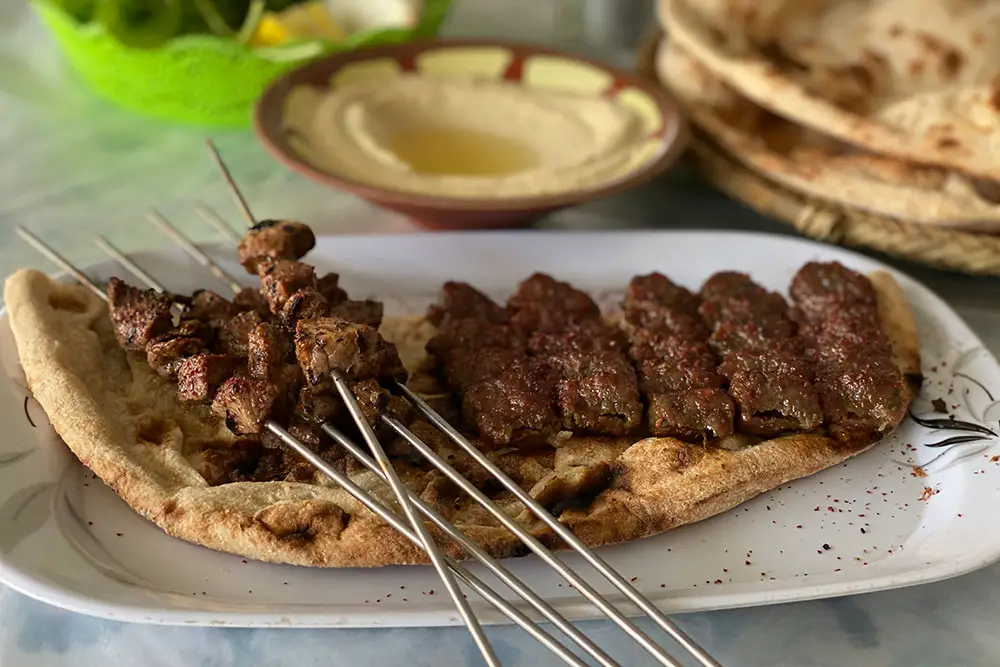
Kabab Bahraini: Grilled Delight from Bahrain’s Culinary Tapestry
History and Background: Kabab Bahraini, a mouthwatering grilled delicacy, has its roots deeply embedded in Bahrain’s culinary tapestry. Inspired by Middle Eastern flavors, Kabab Bahraini is a testament to the island’s love for succulent, well-spiced meat.
As a staple of Bahraini cuisine, these skewered and grilled kebabs reflect the region’s rich cultural heritage, where communal dining and the joy of savoring grilled meats hold a special place.
Region of Origin: Kabab Bahraini shares its origins with the broader Middle Eastern culinary traditions. The dish showcases the influence of Arabian spices and grilling techniques that have been perfected over centuries.
Whether enjoyed as street food or at family gatherings, Kabab Bahraini embodies the essence of Bahrain’s culinary identity.
Bahrain Food – Kabab Bahraini Ingredients:
- 500g minced lamb or beef
- 1 large onion, finely grated
- 2 tablespoons finely chopped fresh parsley
- 2 tablespoons finely chopped fresh coriander
- 2 teaspoons ground cumin
- 1 teaspoon ground coriander
- 1 teaspoon paprika
- 1/2 teaspoon ground cinnamon
- Salt and pepper to taste
- Wooden or metal skewers, soaked if wooden
- Olive oil for brushing
Bahrain Food – Kabab Bahraini Recipe:
Ingredients Preparation:
- Prepare Meat Mixture: In a bowl, combine minced lamb or beef with finely grated onion, chopped parsley, chopped coriander, ground cumin, ground coriander, paprika, ground cinnamon, salt, and pepper. Mix well.
Shaping and Skewering:
- Shape Kebabs: Take portions of the meat mixture and shape them into elongated cylinders around the skewers.
- Refrigerate: Place the skewered meat in the refrigerator for at least 30 minutes to allow flavors to meld.
Grilling Kabab Bahraini:
- Preheat Grill: Preheat a grill or grill pan to medium-high heat.
- Brush with Oil: Brush the skewered meat with olive oil to prevent sticking.
- Grill: Grill the Kabab Bahraini for approximately 10-12 minutes, turning occasionally, until the meat is cooked through and has a nice char.
Serving Kabab Bahraini:
- Serve Hot: Serve the grilled kebabs hot, traditionally with flatbread, tahini sauce, and a side of fresh salad.
Servings: 4-6 people
Cooking Time: 20-30 minutes
Calories: Approximately 250 calories per serving (calculated based on average ingredient values).
Kabab Bahraini’s aromatic spices and tender texture encapsulate the heartiness and warmth of Bahraini cuisine, making it a favorite among those who appreciate the irresistible allure of grilled meats.
Bahrain Food – Khanfaroosh

Khanfaroosh: Bahrain’s Sweet Culinary Artistry
History and Background: Khanfaroosh, a delicate and sweet Bahraini treat, is a testament to the country’s culinary artistry. With a history rooted in traditional Arabian and Persian sweets, Khanfaroosh showcases Bahrain’s flair for combining flavors and textures to create a dessert that is both visually appealing and rich in taste.
This sweet delicacy is often associated with festive occasions, family gatherings, and the joy of sharing.
Region of Origin: Originating from the Arabian Peninsula and influenced by Persian confectionery, Khanfaroosh has become a hallmark of Bahraini desserts.
The intricate preparation and use of premium ingredients reflect the region’s commitment to celebrating sweetness as an integral part of cultural and social events.
Bahrain Food – Khanfaroosh Ingredients:
- 2 cups all-purpose flour
- 1 cup ghee (clarified butter)
- 1 cup powdered sugar
- 1 cup finely chopped mixed nuts (almonds, pistachios, walnuts)
- 1 teaspoon ground cardamom
- 1/2 teaspoon rosewater (optional)
- 1/4 cup sesame seeds (for coating)
- Whole pistachios or almonds for garnish
Bahrain Food – Khanfaroosh Recipe:
Ingredients Preparation:
- Prepare Flour Mixture: In a large bowl, combine all-purpose flour and ghee. Mix until it resembles coarse crumbs.
- Add Sweetness: Gradually add powdered sugar to the flour mixture. Blend until well combined.
- Incorporate Nuts and Flavorings: Add the finely chopped mixed nuts, ground cardamom, and rosewater (if using). Mix until the dough comes together.
Shaping Khanfaroosh:
- Shape Dough: Take small portions of the dough and shape them into small cylindrical or oval forms.
- Coat with Sesame Seeds: Roll each shaped piece in sesame seeds, ensuring an even coating.
- Garnish: Place a whole pistachio or almond on top of each piece for garnish.
Baking Khanfaroosh:
- Preheat Oven: Preheat the oven to 350°F (180°C).
- Bake: Place the shaped and coated Khanfaroosh on a baking sheet and bake for 15-20 minutes or until they turn golden brown.
Serving Khanfaroosh:
- Cool and Store: Allow Khanfaroosh to cool completely before serving. Store in an airtight container.
Servings: Makes approximately 30 pieces
Cooking Time: 15-20 minutes
Calories: Approximately 80 calories per piece (calculated based on average ingredient values).
Khanfaroosh’s exquisite blend of buttery dough, crunchy nuts, and fragrant cardamom represents the sweet side of Bahrain’s culinary prowess, offering a delightful experience for those with a penchant for traditional desserts.
Bahrain Food – Keema

Keema: Bahrain’s Flavorful Ground Meat Delight
History and Background: Keema, a delectable ground meat dish, has a rich history rooted in Bahrain’s culinary traditions and the broader Middle Eastern and Indian influences on the island. Meaning “minced meat” in Hindi, Keema reflects the diverse cultural exchanges that have shaped Bahrain’s gastronomy.
This versatile dish, often prepared with lamb or beef, showcases the island’s openness to embracing a myriad of flavors and techniques.
Region of Origin: While Keema’s origins are traced back to Indian and Middle Eastern cuisines, the Bahraini adaptation has its unique flavor profile.
The dish exemplifies the fusion of aromatic spices, herbs, and ground meat that characterizes Bahrain’s commitment to creating dishes that cater to diverse palates.
Bahrain Food – Keema Ingredients:
- 500g ground lamb or beef
- 1 large onion, finely chopped
- 2 tomatoes, finely chopped
- 2 tablespoons vegetable oil
- 1 tablespoon ginger-garlic paste
- 1 teaspoon ground cumin
- 1 teaspoon ground coriander
- 1/2 teaspoon turmeric powder
- 1/2 teaspoon red chili powder (adjust to taste)
- 1/2 teaspoon garam masala
- Salt and pepper to taste
- Fresh coriander leaves for garnish
Bahrain Food – Keema Recipe:
Ingredients Preparation:
- Prepare Ground Meat: If not already ground, process the lamb or beef to a fine mince.
- Chop Onion and Tomatoes: Finely chop the onion and tomatoes.
Cooking Keema:
- Sauté Onion: In a pan, heat vegetable oil and sauté the chopped onion until golden brown.
- Add Ginger-Garlic Paste: Add ginger-garlic paste and sauté until the raw aroma disappears.
- Cook Ground Meat: Add the ground meat to the pan. Cook until it browns, breaking up any lumps.
- Add Spices: Incorporate ground cumin, ground coriander, turmeric powder, red chili powder, garam masala, salt, and pepper. Mix well.
- Add Tomatoes: Add chopped tomatoes and cook until they soften and blend into the mixture.
Simmering Keema:
- Simmer: Allow the Keema to simmer on low heat, covered, until the flavors meld and the meat is fully cooked. This usually takes about 20-30 minutes.
Serving Keema:
- Garnish and Serve: Garnish Keema with fresh coriander leaves and serve hot with rice, naan, or flatbread.
Servings: 4-6 people
Cooking Time: 30 minutes
Calories: Approximately 300 calories per serving (calculated based on average ingredient values).
Keema’s robust and savory profile makes it a cherished part of Bahraini cuisine, reflecting the island’s dynamic culinary landscape and its openness to incorporating global flavors.
Bahrain Food – Khobez Jebn

Khobez Jebn: Bahrain’s Cheesy Bread Delight
History and Background: Khobez Jebn, translating to “bread with cheese” in Arabic, is a beloved Bahraini dish that combines the comforting elements of bread and the richness of cheese. This simple yet flavorful creation reflects the island’s penchant for transforming basic ingredients into delicious and satisfying meals.
With roots in traditional Arabian bread-making and a contemporary twist with cheese, Khobez Jebn embodies Bahrain’s fusion of the old and the new in its culinary landscape.
Region of Origin: Khobez Jebn has its origins in the broader Arabian Peninsula, where flatbreads have been a staple for centuries.
The addition of cheese brings a modern touch to this classic bread, showcasing Bahrain’s adaptability to evolving tastes and preferences.
Bahrain Food – Khobez Jebn Ingredients:
- 4 pieces of flatbread (Khobez)
- 1 cup Akkawi cheese, grated (or any mild white cheese)
- 1 cup Kashkaval cheese, grated (or any sharp yellow cheese)
- 2 tablespoons olive oil
- 1 teaspoon za’atar (optional)
- Fresh herbs for garnish (parsley, mint, or cilantro)
- Salt and pepper to taste
Bahrain Food – Khobez Jebn Recipe:
Ingredients Preparation:
- Prepare Flatbread: If not store-bought, prepare or purchase flatbread (Khobez).
- Grate Cheese: Grate Akkawi and Kashkaval cheeses.
Assembling Khobez Jebn:
- Preheat Oven: Preheat the oven to 375°F (190°C).
- Brush with Olive Oil: Place flatbread on a baking sheet and brush with olive oil.
- Add Cheese: Sprinkle a generous amount of both Akkawi and Kashkaval cheeses evenly over the flatbread.
- Optional Za’atar: If desired, sprinkle za’atar over the cheese for added flavor.
Baking Khobez Jebn:
- Bake: Place the baking sheet in the preheated oven and bake for 10-12 minutes or until the cheese is melted, and the edges of the flatbread are golden brown.
Serving Khobez Jebn:
- Garnish and Serve: Remove from the oven, garnish with fresh herbs, and cut into slices. Serve hot.
Servings: 4-6 people
Cooking Time: 15 minutes
Calories: Approximately 250 calories per serving (calculated based on average ingredient values).
Khobez Jebn, with its delightful combination of warm bread and gooey cheese, represents Bahrain’s ability to infuse innovation into traditional dishes, creating a comfort food that resonates with both locals and visitors alike.
Bahrain Food – Luqaimat
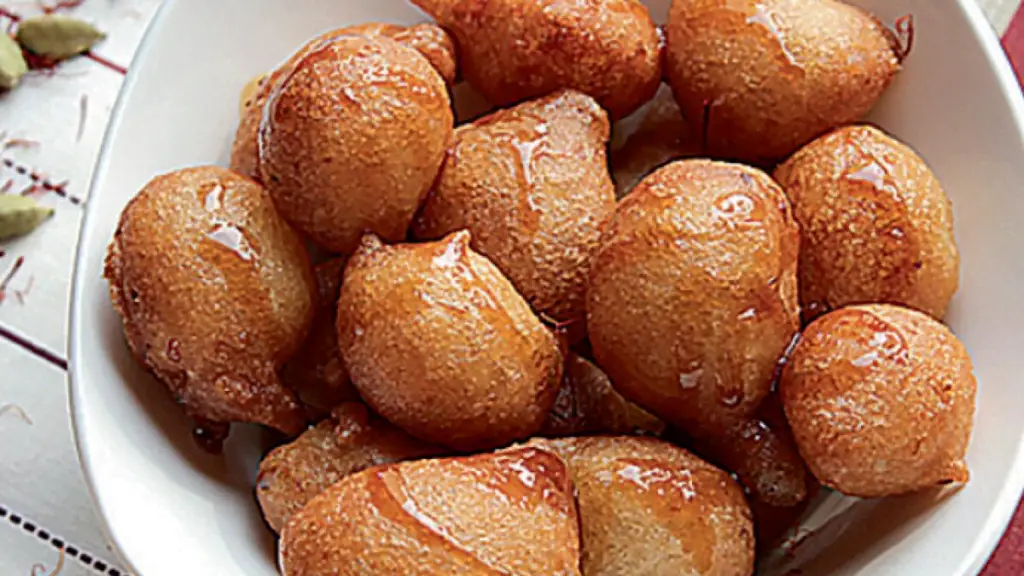
Luqaimat: Bahrain’s Irresistible Sweet Dumplings
History and Background: Luqaimat, small deep-fried dumplings, have deep roots in Bahrain’s culinary heritage and are an integral part of the country’s dessert landscape. Originating from traditional Arabian sweets, Luqaimat are often enjoyed during festive occasions, family gatherings, and celebrations.
Their simplicity, combined with the richness of date syrup or honey, showcases Bahrain’s appreciation for sweet treats that bring joy to special moments.
Region of Origin: Luqaimat finds its origins in the broader Arabian Peninsula, where similar sweet dumplings are popular across the Middle East.
In Bahrain, these delightful bites have been embraced as a symbol of hospitality and are served generously during various cultural and social events.
Bahrain Food – Luqaimat Ingredients:
- 2 cups all-purpose flour
- 1 teaspoon instant yeast
- 1 tablespoon sugar
- 1/2 teaspoon salt
- 1 1/2 cups warm water
- Vegetable oil for frying
- Date syrup or honey for drizzling
- Sesame seeds or chopped nuts for garnish (optional)
Bahrain Food – Luqaimat Recipe:
Dough Preparation:
- Combine Dry Ingredients: In a bowl, mix all-purpose flour, instant yeast, sugar, and salt.
- Add Warm Water: Gradually add warm water while stirring to form a smooth batter. Allow the batter to rest and rise for at least 1-2 hours.
Frying Luqaimat:
- Heat Oil: Fill a deep pan with vegetable oil and heat to 350°F (180°C).
- Scoop Batter: Using a spoon, scoop small portions of the risen batter and drop them gently into the hot oil.
- Fry Until Golden: Fry the dumplings until they turn golden brown, ensuring they are cooked through.
Serving Luqaimat:
- Drizzle with Syrup: Remove the fried dumplings and drain excess oil. Drizzle generously with date syrup or honey.
- Garnish (Optional): Optionally, sprinkle sesame seeds or chopped nuts for added texture and flavor.
Servings: 4-6 people
Cooking Time: 30 minutes (excluding resting time)
Calories: Approximately 150 calories per serving (calculated based on average ingredient values).
Luqaimat’s sweet and airy indulgence encapsulates the essence of Bahraini celebrations, offering a delightful experience that brings people together through the joy of shared flavors.
Bahrain Food – Macaroni Taybeen

Macaroni Taybeen: Bahrain’s Fusion Pasta Dish
History and Background: Macaroni Taybeen, a delightful fusion of pasta and Bahraini flavors, showcases the island’s openness to incorporating global culinary influences. Originating from the crossroads of Arabian and Italian cuisines, this dish has become a comfort food favorite in Bahrain.
Macaroni Taybeen’s rich and hearty profile reflects the nation’s diverse palate and its embrace of international culinary elements.
Region of Origin: While the roots of pasta dishes can be traced to Italy, Macaroni Taybeen emerges from Bahrain’s kitchens as a unique adaptation.
This delightful marriage of pasta and Arabian spices epitomizes the island’s culinary creativity.
Bahrain Food – Macaroni Taybeen Ingredients:
- 2 cups elbow macaroni, cooked al dente
- 500g ground beef or lamb
- 1 large onion, finely chopped
- 2 cloves garlic, minced
- 2 tablespoons tomato paste
- 1 can (400g) crushed tomatoes
- 1 teaspoon ground cumin
- 1 teaspoon ground coriander
- 1/2 teaspoon ground cinnamon
- Salt and pepper to taste
- 2 tablespoons olive oil
- Fresh parsley for garnish
- Grated Parmesan cheese for serving (optional)
Bahrain Food – Macaroni Taybeen Recipe:
Preparation of Ingredients:
- Cook Macaroni: Cook the elbow macaroni according to package instructions until al dente.
- Sauté Onion and Garlic: In a large pan, heat olive oil and sauté finely chopped onion and minced garlic until softened.
Cooking the Meat Mixture:
- Add Ground Meat: Add ground beef or lamb to the pan and cook until browned.
- Season: Incorporate ground cumin, ground coriander, ground cinnamon, salt, and pepper. Mix well.
- Add Tomato Paste and Crushed Tomatoes: Stir in tomato paste and crushed tomatoes. Simmer the mixture until it thickens and flavors meld.
Assembling Macaroni Taybeen:
- Combine with Cooked Macaroni: Add the cooked elbow macaroni to the meat mixture. Mix until well combined.
- Simmer: Allow the mixture to simmer for an additional 5-7 minutes to let the flavors infuse.
Serving Macaroni Taybeen:
- Garnish and Serve: Garnish with fresh parsley and, if desired, serve with grated Parmesan cheese.
Servings: 4-6 people
Cooking Time: 30 minutes
Calories: Approximately 400 calories per serving (calculated based on average ingredient values).
Macaroni Taybeen stands as a testament to Bahrain’s culinary versatility, offering a savory and satisfying dish that brings together the best of Arabian and Italian influences on the island’s dinner tables.
Bahrain Food – Mansaf
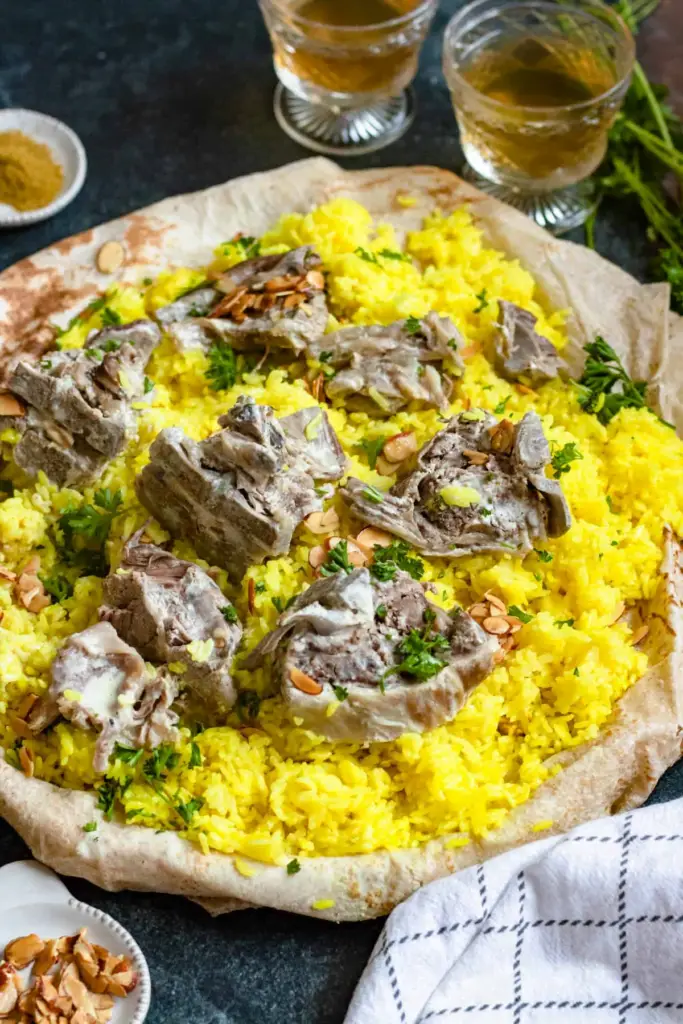
Mansaf: A Culinary Journey Through Bahraini Heritage
History and Background
Mansaf, a central dish in Bahraini cuisine, is deeply embedded in the cultural fabric of the nation. Originating from Bedouin traditions, Mansaf holds historical significance as a celebratory dish served during special occasions.
This savory delight showcases the Bedouin way of life, emphasizing communal eating and the use of local ingredients. Typically made with lamb, rice, and fermented yogurt, Mansaf has evolved into a symbol of hospitality and unity in Bahrain.
Ingredients:
The Lamb:
- 1 kg lamb, cut into chunks
- 2 tablespoons ghee
- 1 large onion, finely chopped
- 1 teaspoon ground cinnamon
- 1 teaspoon ground allspice
- Salt and black pepper to taste
- 4 cups plain yogurt, fermented (jameed)
Rice:
- 2 cups basmati rice
- 1/4 cup ghee
- 1/4 cup blanched almonds, toasted
- 1/4 cup pine nuts, toasted
Garnish:
- Fresh parsley, chopped
- Sumac for sprinkling
Recipe:
Preparing the Lamb
- Brown the Lamb:
- In a large pot, heat ghee over medium heat.
- Brown the lamb chunks on all sides.
- Saute Onions and Spices:
- Add finely chopped onions to the pot and sauté until golden.
- Stir in ground cinnamon, ground allspice, salt, and black pepper.
- Simmer with Fermented Yogurt:
- Pour fermented yogurt (jameed) over the lamb, ensuring it covers the meat.
- Simmer on low heat until the lamb is tender and the yogurt thickens.
Making the Rice
- Rinse and Soak Rice:
- Rinse basmati rice under cold water until the water runs clear.
- Soak the rice in water for 15-30 minutes.
- Cook Rice:
- In a separate pot, heat ghee over medium heat.
- Drain the soaked rice and add it to the pot, stirring for a few minutes.
- Add water, bring to a boil, then simmer until the rice is cooked.
- Toast Almonds and Pine Nuts:
- In a small pan, toast blanched almonds and pine nuts until golden brown.
Serving Mansaf
- Assemble the Dish:
- Arrange the cooked rice on a serving platter.
- Place the lamb on top, spooning the yogurt sauce over it.
- Garnish and Serve:
- Sprinkle chopped parsley, toasted almonds, pine nuts, and sumac over Mansaf.
- Serve hot, family-style, allowing everyone to dig in.
Serving Size: 6-8 people
Estimated Cooking Time: 2.5 – 3 hours
Calories (per serving): Approximately 550 calories
Bahrain Food – Machboos
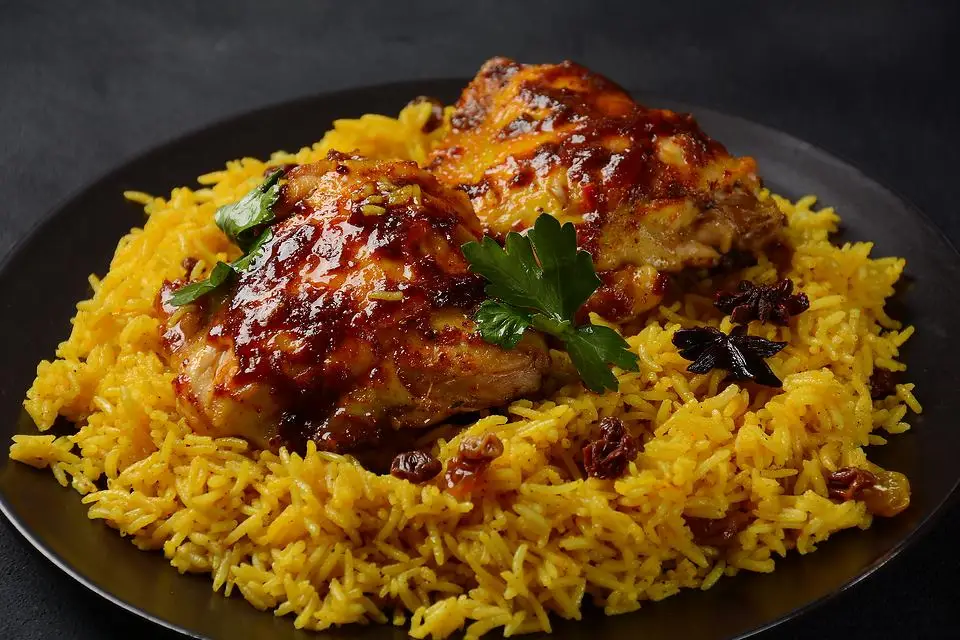
Machboos: Bahrain’s Fragrant One-Pot Rice Dish
History and Background: Machboos, a quintessential Bahraini dish, is a flavorful one-pot rice preparation that mirrors the island’s rich culinary heritage. This aromatic dish has deep roots in Arabian and Persian cooking traditions and stands as a symbol of communal feasting.
Known for its distinctive blend of spices, tender meat, and fragrant rice, Machboos has become a staple at family gatherings, celebrations, and everyday meals in Bahrain.
Region of Origin: Machboos has its origins in the Arabian Gulf region, with variations found in several Middle Eastern and South Asian cuisines.
The dish showcases Bahrain’s unique approach to incorporating local spices and flavors, making it a cherished part of the country’s gastronomic identity.
Bahrain Food – Machboos Ingredients:
- 2 cups basmati rice
- 500g meat (chicken, lamb, or beef), cut into pieces
- 2 large onions, finely chopped
- 3 tomatoes, chopped
- 4 cloves garlic, minced
- 2 inches ginger, grated
- 1/2 cup vegetable oil
- 2 tablespoons Machboos spice blend (cinnamon, cardamom, cloves, bay leaves)
- 1 teaspoon ground cumin
- 1 teaspoon ground coriander
- 1 teaspoon ground turmeric
- 2 dried limes (loomi), pierced
- 4 cups chicken or beef broth
- Salt and pepper to taste
- Fresh cilantro or mint for garnish
- Fried onions for garnish (optional)
Bahrain Food – Machboos Recipe:
Preparing the Ingredients:
- Wash and Soak Rice: Wash basmati rice thoroughly and soak it in water for 30 minutes.
- Marinate Meat: In a bowl, marinate the meat with minced garlic, grated ginger, Machboos spice blend, ground cumin, ground coriander, ground turmeric, salt, and pepper. Allow it to marinate for at least 30 minutes.
Cooking Machboos:
- Sauté Onions: In a large pot, heat vegetable oil and sauté chopped onions until golden brown.
- Add Marinated Meat: Add the marinated meat to the pot and brown it on all sides.
- Add Tomatoes: Incorporate chopped tomatoes and cook until they soften.
- Add Dried Limes and Broth: Add dried limes to the pot, then pour in chicken or beef broth. Bring the mixture to a boil.
Cooking the Rice:
- Add Soaked Rice: Drain the soaked rice and add it to the boiling broth. Mix well.
- Simmer: Reduce heat to low, cover the pot, and let the rice cook until tender and the liquid is absorbed. This usually takes about 15-20 minutes.
Serving Machboos:
- Garnish and Serve: Fluff the rice with a fork, garnish with fresh cilantro or mint, and serve hot. Optionally, top with fried onions for added crunch.
Servings: 6-8 people
Cooking Time: 1 hour
Calories: Approximately 400 calories per serving (calculated based on average ingredient values).
Machboos, with its harmonious blend of spices and textures, reflects Bahrain’s culinary prowess, offering a delightful journey through the country’s rich and diverse flavors.
Bahrain Food – Ma’amoul
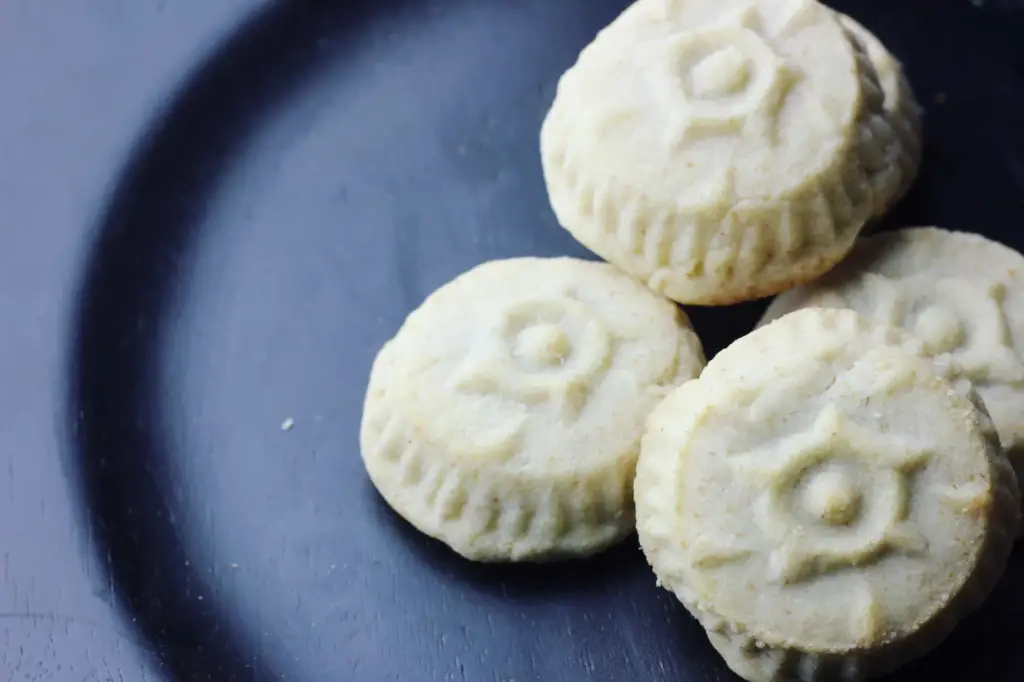
Ma’amoul: Bahrain’s Irresistible Date-Filled Cookies
History and Background: Ma’amoul, a beloved Bahraini sweet, has a history deeply rooted in Middle Eastern traditions. These delightful date-filled cookies are a staple during festive occasions, religious celebrations, and family gatherings.
Originating from the Arabian Peninsula, Ma’amoul reflects the region’s deep connection to dates, a revered fruit in Middle Eastern cultures. The intricate patterns on the cookies not only make them visually appealing but also showcase the artistry embedded in Bahrain’s culinary heritage.
Region of Origin: Ma’amoul finds its origins in the broader Middle East, with variations present in several countries.
In Bahrain, Ma’amoul holds a special place on dessert tables, embodying the island’s commitment to preserving and celebrating its cultural flavors.
Bahrain Food – Ma’amoul Ingredients:
Dough:
- 3 cups semolina
- 1 cup all-purpose flour
- 1 cup unsalted butter, melted
- 1/2 cup granulated sugar
- 1/4 cup rosewater or orange blossom water
- 1/4 cup milk
Date Filling:
- 2 cups dates, pitted and chopped
- 2 tablespoons unsalted butter
- 1/2 teaspoon ground cinnamon
Bahrain Food – Ma’amoul Recipe:
Preparing the Dough:
- Combine Dry Ingredients: In a large bowl, mix semolina, all-purpose flour, and granulated sugar.
- Add Wet Ingredients: Add melted butter, rosewater (or orange blossom water), and milk to the dry ingredients. Mix until a smooth dough forms.
Making the Date Filling:
- Cook Dates: In a saucepan, combine chopped dates, unsalted butter, and ground cinnamon. Cook over medium heat until the dates soften and the mixture thickens. Allow it to cool.
Assembling Ma’amoul:
- Preheat Oven: Preheat the oven to 350°F (180°C).
- Shape Dough: Take a portion of the dough and shape it into a small cup. Place a spoonful of the date filling in the center.
- Seal and Shape: Seal the edges of the dough, ensuring the date filling is completely enclosed. Shape the filled dough into a ball or use a Ma’amoul mold for decorative patterns.
Baking Ma’amoul:
- Place on Baking Sheet: Arrange the shaped Ma’amoul on a baking sheet lined with parchment paper.
- Bake: Bake in the preheated oven for 15-20 minutes or until the cookies are golden brown.
Serving Ma’amoul:
- Cool and Enjoy: Allow Ma’amoul to cool before serving. Dust with powdered sugar if desired.
Servings: Makes approximately 24 cookies
Cooking Time: 20 minutes
Calories: Approximately 150 calories per serving (calculated based on average ingredient values).
Ma’amoul’s delectable blend of semolina, buttery dough, and sweet date filling encapsulates the warmth and sweetness of Bahrain’s culinary traditions, making it a cherished treat for both locals and visitors.
Bahrain Food – Muhammar
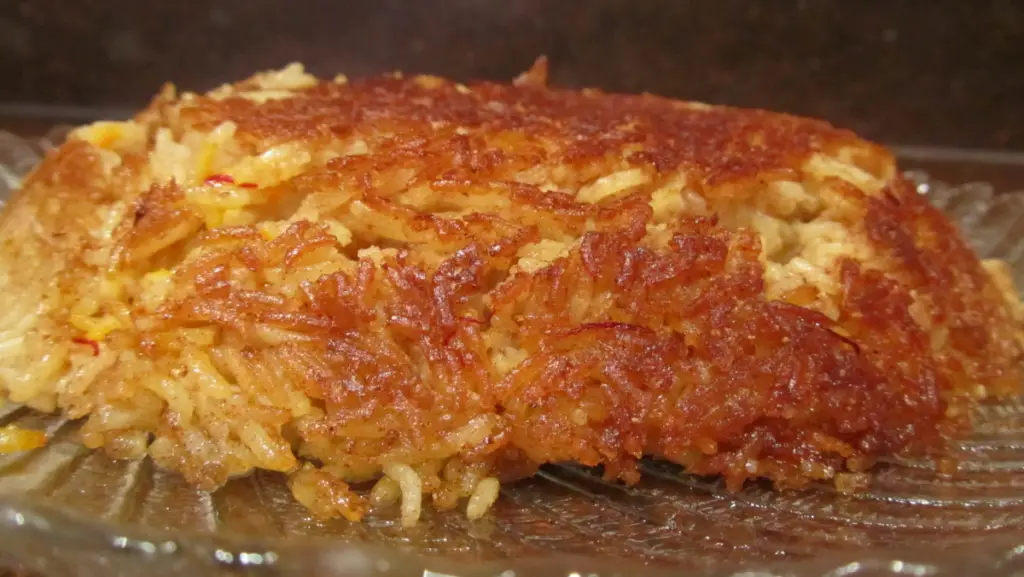
Muhammar: Bahrain’s Sweet Rice Delight
History and Background: Muhammar, a delectable sweet rice dish, has deep roots in Bahrain’s culinary heritage, embodying the island’s love for combining sweetness with savory elements. Originating from traditional Arabian cuisine, Muhammar is often associated with festive occasions and special celebrations.
The dish’s name, meaning “reddened” in Arabic, refers to the reddish-brown color the rice takes on during cooking, a result of the unique blend of ingredients that contribute to its distinctive flavor profile.
Region of Origin: Muhammar finds its origins in the Arabian Gulf region, where sweet rice dishes have been cherished for centuries.
In Bahrain, Muhammar is a beloved part of the country’s cultural and culinary traditions, symbolizing hospitality and the joy of sharing a delightful meal.
Bahrain Food – Muhammar Ingredients:
- 2 cups basmati rice
- 1 cup dates, pitted and chopped
- 1 cup sugar
- 1/2 cup unsalted butter
- 1/4 cup vegetable oil
- 1/4 cup rosewater
- 1/4 teaspoon ground cinnamon
- 1/4 teaspoon ground cardamom
- Pinch of saffron threads (optional)
- 4 cups water
- Pinch of salt
- Slivered almonds or chopped pistachios for garnish
Bahrain Food – Muhammar Recipe:
Preparing the Ingredients:
- Wash Rice: Wash basmati rice thoroughly and soak it in water for 30 minutes.
- Soak Saffron (Optional): If using saffron, soak the saffron threads in a tablespoon of warm water.
Cooking Muhammar:
- Combine Ingredients: In a large pot, combine soaked rice, chopped dates, sugar, unsalted butter, vegetable oil, rosewater, ground cinnamon, ground cardamom, soaked saffron (with water), and a pinch of salt.
- Add Water: Pour in 4 cups of water, ensuring the rice and other ingredients are well-submerged.
Simmering Muhammar:
- Simmer: Bring the mixture to a boil, then reduce the heat to low. Cover the pot and let it simmer until the rice is cooked and the liquid is absorbed. This usually takes about 15-20 minutes.
Serving Muhammar:
- Fluff and Garnish: Once cooked, fluff the rice with a fork. Garnish with slivered almonds or chopped pistachios for added texture and presentation.
- Serve Warm: Muhammar is best enjoyed warm, offering a delightful blend of sweetness and aromatic spices.
Servings: 4-6 people
Cooking Time: 30 minutes
Calories: Approximately 400 calories per serving (calculated based on average ingredient values).
Muhammar’s sweet and fragrant allure captures the spirit of Bahrain’s festive occasions, bringing people together through the joy of shared flavors and cultural traditions.
Bahrain Food – Qoozi

Qoozi: Bahrain’s Celebratory Lamb Dish
History and Background: Qoozi, a grand and celebratory dish, holds a special place in Bahrain’s culinary traditions. Originating from the Arabian Gulf region, Qoozi is often prepared during significant occasions, family gatherings, and festive events.
This delectable dish features slow-cooked lamb, fragrant rice, and a blend of aromatic spices, showcasing the culinary prowess and hospitality for which Bahrain is renowned.
Region of Origin: Qoozi has deep roots in Arabian cuisine and is a symbol of generosity and abundance. In Bahrain, Qoozi is a centerpiece during special celebrations, embodying the warmth and communal spirit of the island.
Bahrain Food – Qoozi Ingredients:
Lamb:
- 1 whole lamb, cleaned and prepared for roasting
- 2 tablespoons vegetable oil
- 2 tablespoons ground coriander
- 2 tablespoons ground cumin
- 2 tablespoons ground cinnamon
- Salt and pepper to taste
Rice:
- 3 cups basmati rice, washed and soaked
- 1/2 cup ghee or clarified butter
- 1 large onion, finely chopped
- 1/4 cup raisins (optional)
- 1/4 cup slivered almonds (optional)
- 1/4 cup pine nuts (optional)
- 1/2 teaspoon ground cardamom
- Salt to taste
Garnish:
- Chopped parsley or cilantro
- Pomegranate seeds (optional)
Bahrain Food – Qoozi Recipe:
Preparing the Lamb:
- Marinate the Lamb: In a bowl, mix vegetable oil, ground coriander, ground cumin, ground cinnamon, salt, and pepper. Rub this mixture over the lamb, ensuring it is well-coated. Allow it to marinate for at least 2 hours or overnight.
Roasting the Lamb:
- Preheat Oven: Preheat the oven to 350°F (180°C).
- Roast the Lamb: Place the marinated lamb on a roasting tray and roast in the preheated oven for 3-4 hours or until the meat is tender and falls off the bone.
Preparing the Rice:
- Sauté Onion: In a separate pot, heat ghee or clarified butter. Sauté chopped onions until golden brown.
- Add Rice and Spices: Add soaked basmati rice, ground cardamom, and salt to the sautéed onions. Mix well.
Cooking the Rice:
- Add Water: Pour in enough water to cook the rice, usually in a 1:2 ratio (1 cup rice to 2 cups water). Bring to a boil, then reduce the heat to low. Cover and let it simmer until the rice is cooked and the water is absorbed.
Assembling Qoozi:
- Combine Lamb and Rice: Once the lamb is roasted and the rice is cooked, layer the rice over the lamb in a serving dish.
- Garnish: Garnish with chopped parsley or cilantro. Optionally, sprinkle pomegranate seeds for a burst of color.
Servings: 8-10 people
Cooking Time: 4-5 hours
Calories: Approximately 800 calories per serving (calculated based on average ingredient values).
Qoozi’s impressive presentation and rich, savory flavors make it a star dish at Bahrain’s festive tables, embodying the essence of celebration and communal joy.
Bahrain Food – Sayadiya

Sayadiya: Bahrain’s Spiced Fish and Rice Delight
History and Background: Sayadiya, a flavorful fish and rice dish, is a culinary masterpiece deeply rooted in Bahrain’s maritime history. Originating from the Arabian Gulf, this dish pays homage to the island’s reliance on the bounties of the sea.
Traditionally prepared by fishermen upon returning from the day’s catch, Sayadiya has become a symbol of Bahrain’s rich cultural heritage and the artistry involved in blending spices, fish, and rice into a harmonious culinary experience.
Region of Origin: Sayadiya finds its origins in the Arabian Gulf, where fishing has been a way of life for centuries. In Bahrain, the dish is not only a culinary delight but also a reflection of the island’s close connection to the sea and the traditions of coastal living.
Bahrain Food – Sayadiya Ingredients:
Fish:
- 1 kg fish (hamour or grouper), cleaned and cut into fillets
- 2 tablespoons vegetable oil
- 1 large onion, finely chopped
- 3 cloves garlic, minced
- 1 teaspoon ground cumin
- 1 teaspoon ground coriander
- 1 teaspoon ground turmeric
- 1 teaspoon ground paprika
- Salt and pepper to taste
- Juice of 1 lemon
Rice:
- 2 cups basmati rice, washed and soaked
- 4 cups fish or vegetable broth
- 1/4 cup vegetable oil
- 1 large onion, finely chopped
- 1/2 cup mixed nuts (almonds, pine nuts)
- 1 teaspoon ground cumin
- 1 teaspoon ground coriander
- 1 teaspoon ground cinnamon
- Salt to taste
Bahrain Food – Sayadiya Recipe:
Preparing the Fish:
- Marinate the Fish: In a bowl, mix vegetable oil, chopped onion, minced garlic, ground cumin, ground coriander, ground turmeric, ground paprika, salt, pepper, and lemon juice. Marinate the fish fillets in this mixture for at least 30 minutes.
Cooking the Fish:
- Sauté Onion and Nuts: In a large pan, heat vegetable oil. Sauté chopped onion and mixed nuts until the onion is golden brown.
- Add Spices: Add ground cumin, ground coriander, ground cinnamon, and salt to the sautéed onion and nuts. Mix well.
- Cook Rice: Add washed and soaked basmati rice to the spiced onion mixture. Stir to coat the rice with the spices.
- Pour Broth: Pour in fish or vegetable broth. Bring to a boil, then reduce heat, cover, and let it simmer until the rice is cooked.
Grilling the Fish:
- Grill the Marinated Fish: While the rice is cooking, grill the marinated fish fillets until they are fully cooked and have a grilled flavor.
Assembling Sayadiya:
- Serve Together: Once the rice and fish are ready, serve the grilled fish fillets on a bed of spiced rice.
Servings: 4-6 people
Cooking Time: 45 minutes
Calories: Approximately 500 calories per serving (calculated based on average ingredient values).
Sayadiya’s aromatic spices and perfectly grilled fish create a symphony of flavors that exemplify Bahrain’s commitment to culinary excellence and the sea’s generous offerings.
Bahrain Food – Muhammar

Muhammar: A Sweet Culinary Heritage from Bahrain
History and Background:
Muhammar, a traditional Bahraini dish, holds a special place in the kingdom’s culinary heritage. Originating from the heart of the Gulf region, Muhammar is celebrated for its sweet and savory fusion, reflecting the historical influence of spice trade routes.
Prepared especially during festive occasions, this dish exemplifies the rich gastronomic history of Bahrain, where the mingling of flavors creates a delectable experience for locals and visitors alike.
Ingredients:
- 2 cups basmati rice
- 1 kg dates, pitted and chopped
- 1 cup ghee
- 1 cup sugar
- 1 teaspoon ground cardamom
- 1 teaspoon ground cinnamon
- 1/2 teaspoon ground cloves
- 1/2 teaspoon ground nutmeg
- 1/4 teaspoon saffron strands (soaked in warm water)
- 1/4 cup rose water
- 1/4 cup orange blossom water
- 1 cup whole milk
Recipe:
Preparing Muhammar
- Soak Basmati Rice:
- Rinse basmati rice under cold water until the water runs clear.
- Soak the rice in water for at least 30 minutes.
- Prepare Dates:
- Pit and chop dates into small pieces.
- Cooking Muhammar:
- In a large pot, melt ghee over medium heat.
- Add the soaked and drained rice, stirring to coat the grains in ghee.
- Add Spices and Sugar:
- Stir in ground cardamom, ground cinnamon, ground cloves, ground nutmeg, and sugar.
- Mix well until the sugar is dissolved.
- Introduce Saffron and Floral Waters:
- Add saffron strands soaked in warm water, rose water, and orange blossom water to the pot.
- Mix to combine and infuse the flavors.
- Layer with Dates:
- Add the chopped dates on top of the rice, creating a layer.
- Simmer and Steam:
- Pour whole milk over the rice and dates.
- Cover the pot and let it simmer on low heat until the rice is cooked and the flavors meld.
Serving Muhammar
- Fluff and Serve:
- Once cooked, fluff the rice with a fork.
- Serve Muhammar hot, allowing the sweet aroma to entice.
Serving Size: 6-8 people
Estimated Cooking Time: 1.5 hours
Calories (per serving): Approximately 450 calories
Bahrain Food – Samak Safi
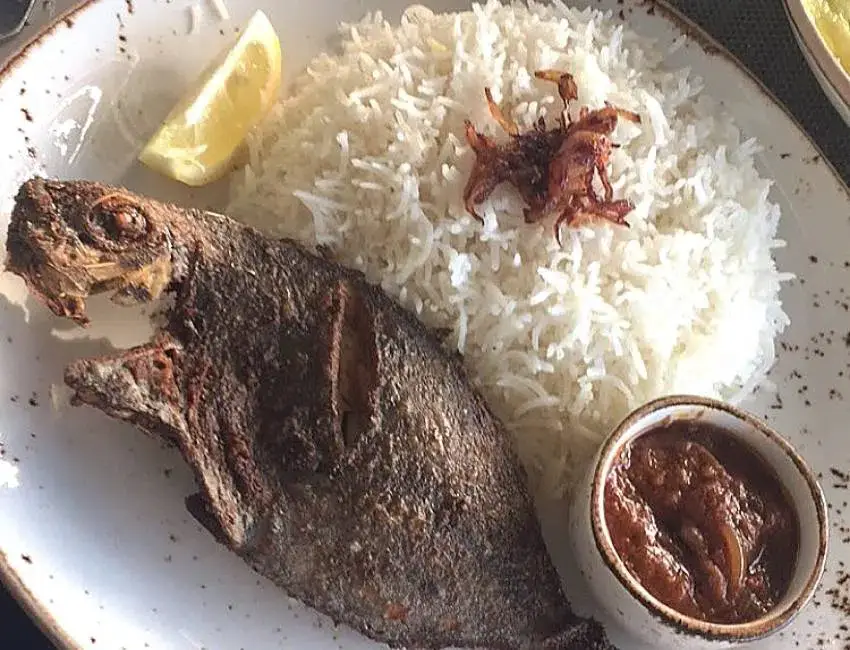
Samak Safi: Bahrain’s Fragrant Spiced Fish
History and Background: Samak Safi, a fragrant and spiced fish dish, is deeply intertwined with Bahrain’s maritime history. Originating from the Arabian Gulf, this dish showcases the region’s love for fresh seafood and aromatic spices.
Bahrain, with its rich coastal heritage, has perfected the art of preparing Samak Safi, transforming it into a culinary masterpiece that reflects the island’s cultural tapestry and the importance of the sea in its cuisine.
Region of Origin: Samak Safi finds its roots in the Arabian Gulf’s culinary traditions, where fish is abundant, and spices are expertly blended to create dishes that tantalize the taste buds.
In Bahrain, Samak Safi is not just a meal; it’s a celebration of the sea’s bounty and the island’s culinary expertise.
Bahrain Food – Samak Safi Ingredients:
- 1 kg safi fish (or any white fish), cleaned and scored
- 2 tablespoons vegetable oil
- 2 tablespoons ground coriander
- 1 tablespoon ground cumin
- 1 tablespoon ground paprika
- 1 teaspoon ground turmeric
- 1 teaspoon ground cinnamon
- 1 teaspoon ground black lime powder (loomi)
- 3 cloves garlic, minced
- Juice of 2 lemons
- Salt and pepper to taste
- Fresh coriander leaves for garnish
Bahrain Food – Samak Safi Recipe:
Preparing the Fish:
- Score the Fish: Make shallow cuts on both sides of the fish to allow the spices to penetrate.
- Marinate with Spices: In a bowl, mix vegetable oil, ground coriander, ground cumin, ground paprika, ground turmeric, ground cinnamon, ground black lime powder, minced garlic, lemon juice, salt, and pepper.
- Rub this mixture over the scored fish, ensuring it’s well-coated.
- Let it marinate for at least 30 minutes.
Grilling the Fish:
- Preheat Grill: Preheat the grill to medium-high heat.
- Grill the Fish: Place the marinated fish on the grill and cook for approximately 5-7 minutes on each side or until the fish is cooked through and has a nice char.
Serving Samak Safi:
- Garnish and Serve: Once grilled, garnish the fish with fresh coriander leaves. Serve hot.
Servings: 4-6 people
Cooking Time: 15 minutes
Calories: Approximately 300 calories per serving (calculated based on average ingredient values).
Samak Safi’s aromatic spices and grilled perfection make it a delightful dish that captures the essence of Bahrain’s coastal flavors, inviting diners to savor the taste of the sea with every bite.
Bahrain Food – Samboosa

Samboosa: Bahrain’s Flavorful Triangular Delight
History and Background: Samboosa, a popular savory pastry, has a rich history in Bahrain’s culinary landscape. Known by various names such as samosa or sambusa in different regions, the dish’s origins can be traced back to the Middle East and Central Asia.
Introduced to Bahrain through cultural exchanges, Samboosa has become a beloved snack and appetizer, showcasing the fusion of flavors and spices that define Bahraini cuisine.
Region of Origin: While the precise origin of Samboosa is debated, it is believed to have originated in Central Asia and the Middle East.
In Bahrain, Samboosa has been embraced as a flavorful and versatile dish, often enjoyed during gatherings, celebrations, and as a street food favorite.
Bahrain Food – Samboosa Ingredients:
Filling:
- 1 cup cooked and shredded chicken or lamb
- 1 cup finely chopped onions
- 1 cup frozen peas
- 1/2 cup chopped carrots
- 2 tablespoons vegetable oil
- 2 teaspoons ground cumin
- 2 teaspoons ground coriander
- 1 teaspoon ground turmeric
- 1 teaspoon chili powder (adjust to taste)
- Salt and pepper to taste
- 2 tablespoons chopped fresh coriander leaves
Dough:
- 2 cups all-purpose flour
- 1/4 cup vegetable oil
- Water for kneading
- Salt to taste
Frying:
- Vegetable oil for deep frying
Bahrain Food – Samboosa Recipe:
Preparing the Filling:
- Sauté Vegetables: In a pan, heat vegetable oil. Sauté chopped onions until golden brown. Add chopped carrots, frozen peas, and shredded chicken or lamb. Cook until vegetables are tender and meat is cooked through.
- Add Spices: Add ground cumin, ground coriander, ground turmeric, chili powder, salt, and pepper. Stir well to combine. Cook for an additional 2-3 minutes. Add chopped fresh coriander leaves and mix. Remove from heat.
Making the Dough:
- Prepare Dough: In a bowl, combine all-purpose flour, vegetable oil, and salt. Gradually add water and knead to form a smooth, elastic dough. Cover and let it rest for 30 minutes.
Assembling Samboosa:
- Divide Dough: Divide the dough into small balls. Roll each ball into a thin, round disc.
- Fill and Fold: Place a spoonful of the filling in the center of the dough disc. Fold the dough over the filling to form a triangle. Seal the edges by pressing with fingers.
Frying Samboosa:
- Heat Oil: Heat vegetable oil in a deep fryer or a pan for deep frying.
- Fry Until Golden: Carefully place the filled triangles into the hot oil and fry until golden brown.
- Drain and Serve: Remove the fried Samboosa and place them on paper towels to drain excess oil. Serve hot.
Servings: 4-6 people
Cooking Time: 45 minutes
Calories: Approximately 150 calories per serving (calculated based on average ingredient values).
Samboosa’s crispy exterior and flavorful filling make it a versatile and satisfying treat, representing Bahrain’s openness to culinary influences and the creativity infused into its street food culture.
Bahrain Food – Shawarma
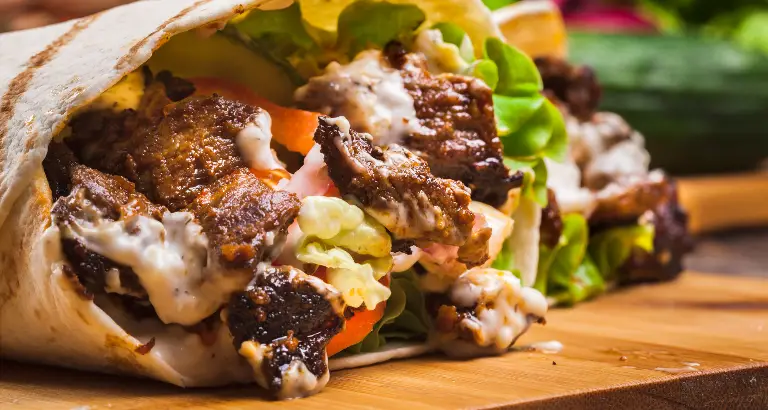
Shawarma: Bahrain’s Irresistible Grilled Delicacy
History and Background: Shawarma, a culinary delight that has transcended borders, traces its roots to the Middle East, including Bahrain. Originating from the Ottoman Empire, this savory street food has become an integral part of Bahrain’s food culture.
Shawarma is a testament to the region’s rich history of trade and cultural exchange, showcasing a harmonious blend of flavors and spices.
Region of Origin: Shawarma’s origins can be traced to the Levant region of the Middle East, including present-day Lebanon, Turkey, and parts of the Arabian Peninsula.
In Bahrain, Shawarma holds a special place as a beloved street food, reflecting the island’s penchant for savoring bold and aromatic flavors.
Bahrain Food – Shawarma Ingredients:
Marinade:
- 500g boneless chicken or beef, thinly sliced
- 1/4 cup plain yogurt
- 2 tablespoons olive oil
- 3 cloves garlic, minced
- 1 teaspoon ground cumin
- 1 teaspoon ground coriander
- 1 teaspoon ground paprika
- 1 teaspoon ground turmeric
- Salt and pepper to taste
- Juice of 1 lemon
Garlic Sauce:
- 1 cup mayonnaise
- 3 cloves garlic, minced
- 1 tablespoon lemon juice
- Salt to taste
Serving:
- Pita bread or flatbreads
- Sliced tomatoes
- Sliced cucumbers
- Chopped lettuce
- Pickles
Bahrain Food – Shawarma Recipe:
Marinating the Meat:
- Prepare Marinade: In a bowl, combine yogurt, olive oil, minced garlic, ground cumin, ground coriander, ground paprika, ground turmeric, salt, pepper, and lemon juice.
- Marinate the Meat: Add the thinly sliced chicken or beef to the marinade, ensuring each piece is well-coated. Let it marinate for at least 2 hours, preferably overnight.
Grilling the Shawarma:
- Preheat Grill or Skillet: Preheat a grill or skillet over medium-high heat.
- Cook the Marinated Meat: Cook the marinated meat slices on the grill or skillet until fully cooked and slightly charred.
Making Garlic Sauce:
- Prepare Garlic Sauce: In a separate bowl, mix mayonnaise, minced garlic, lemon juice, and salt. Adjust the seasoning to taste.
Assembling Shawarma:
- Warm Bread: Warm the pita bread or flatbreads.
- Layer Ingredients: Place a generous amount of the grilled meat on the bread. Top with sliced tomatoes, cucumbers, lettuce, and pickles.
- Drizzle with Garlic Sauce: Drizzle the prepared garlic sauce over the filling.
Servings: 4-6 people
Cooking Time: 20 minutes
Calories: Approximately 400 calories per serving (calculated based on average ingredient values).
Shawarma’s succulent grilled meat, flavorful marinade, and zesty garlic sauce encapsulate the essence of Bahrain’s street food scene, providing a satisfying and aromatic experience for those seeking a taste of Middle Eastern culinary heritage.
Bahrain Food – Tikka
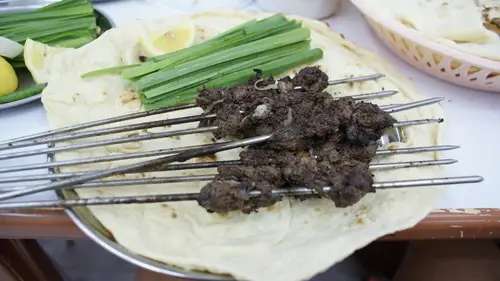
Tikka: Bahrain’s Flavorful Grilled Delight
History and Background: Tikka, a tantalizing grilled dish, has deep roots in the rich culinary history of Bahrain and the broader Indian subcontinent. Originating from the Indian tandoori tradition, Tikka made its way to Bahrain through historical trade connections.
This flavorful dish, known for its vibrant spices and succulent grilled meat, has become a popular and cherished part of Bahrain’s diverse gastronomic landscape.
Region of Origin: Tikka traces its origin to the Indian subcontinent, where it gained fame as a beloved part of tandoori cuisine.
In Bahrain, Tikka has been embraced and adapted, reflecting the island’s openness to culinary influences from around the world.
Bahrain Food – Tikka Ingredients:
Marinade:
- 500g boneless chicken, cut into bite-sized pieces
- 1/2 cup yogurt
- 2 tablespoons ginger-garlic paste
- 1 tablespoon red chili powder
- 1 tablespoon ground cumin
- 1 tablespoon ground coriander
- 1 teaspoon turmeric powder
- 1 teaspoon garam masala
- Salt to taste
- Juice of 1 lemon
- 2 tablespoons vegetable oil
Grilling:
- Skewers for grilling
Serving:
- Chopped coriander leaves for garnish
- Lemon wedges
Recipe:
Marinating the Chicken:
- Prepare Marinade: In a bowl, mix yogurt, ginger-garlic paste, red chili powder, ground cumin, ground coriander, turmeric powder, garam masala, salt, lemon juice, and vegetable oil.
- Marinate the Chicken: Coat the chicken pieces thoroughly with the marinade. Let it marinate for at least 2 hours, or preferably overnight for maximum flavor.
Skewering and Grilling:
- Preheat Grill or Oven: Preheat the grill or oven to medium-high heat.
- Skewer the Chicken: Thread the marinated chicken pieces onto skewers.
- Grill the Tikka: Grill the skewered chicken on the preheated grill or in the oven until fully cooked and has a nice char on the edges.
Serving Tikka:
- Garnish and Serve: Remove the chicken from the skewers, garnish with chopped coriander leaves, and serve hot. Accompany with lemon wedges for added zest.
Servings: 4-6 people
Cooking Time: 20 minutes
Calories: Approximately 300 calories per serving (calculated based on average ingredient values).
Tikka’s vibrant spices and tender grilled texture make it a favorite among Bahraini food enthusiasts, showcasing the island’s ability to embrace and elevate global culinary traditions.
Bahrain Food – Thareed

History and Background: Thareed, a wholesome stew, holds a special place in Bahrain’s culinary heritage, embodying a perfect fusion of flavors and textures. With roots in traditional Arabian cuisine, Thareed has been enjoyed for centuries, reflecting the importance of communal dining and resourceful use of locally available ingredients.
As a staple in Bahraini households, Thareed showcases the island’s commitment to preserving cultural recipes and nourishing both body and soul.
Region of Origin: Thareed’s origins can be traced to the Arabian Peninsula, where communal pots of slow-cooked stews have been a tradition for generations.
In Bahrain, Thareed is not just a meal; it’s a symbol of hospitality, often shared during gatherings, celebrations, and family meals.
Bahrain Food – Thareed Ingredients:
- 500g lamb or chicken, cubed
- 2 tablespoons vegetable oil
- 1 large onion, finely chopped
- 3 cloves garlic, minced
- 2 tomatoes, diced
- 1 tablespoon tomato paste
- 1 teaspoon ground cumin
- 1 teaspoon ground coriander
- 1 teaspoon ground turmeric
- 1 teaspoon ground cinnamon
- Salt and pepper to taste
- 4 cups water or broth
- 4 large Arabic flatbreads (khobez), torn into pieces
- Mixed vegetables (carrots, zucchini, potatoes), chopped
- Fresh coriander leaves for garnish
Bahrain Food – Thareed Recipe:
Preparing the Meat:
- Sautéing Meat: In a large pot, heat vegetable oil. Sauté chopped onions until golden brown. Add minced garlic and diced tomatoes.
- Adding Meat and Spices: Add cubed lamb or chicken to the pot. Season with ground cumin, ground coriander, ground turmeric, ground cinnamon, salt, and pepper. Cook until the meat is browned.
Creating the Base:
- Adding Tomato Paste: Stir in tomato paste and cook for a few minutes. Pour in water or broth, bringing the mixture to a simmer.
- Tearing Bread: Tear the Arabic flatbreads into bite-sized pieces and add them to the simmering stew. Stir well to create a thickened base.
Adding Vegetables:
- Incorporating Vegetables: Add chopped mixed vegetables to the pot. Allow the stew to simmer until the vegetables are tender and the flavors meld.
Serving Thareed:
- Garnish and Serve: Once cooked, garnish Thareed with fresh coriander leaves. Serve hot, allowing the torn bread to absorb the flavorful broth.
Servings: 4-6 people
Cooking Time: 1 hour
Calories: Approximately 400 calories per serving (calculated based on average ingredient values).
Thareed’s heartiness and comforting flavors make it a cherished Bahraini dish, embodying the island’s commitment to preserving culinary traditions and creating nourishing meals that bring people together.
Frequently Asked Questions
1. What defines the essence of Bahraini cuisine?
Bahraini cuisine is characterized by a harmonious blend of flavors influenced by Arabian, Persian, Indian, and Mediterranean culinary traditions. The use of aromatic spices, fresh herbs, and a variety of meats and vegetables creates a diverse and delicious food culture.
2. How has Bahrain’s history shaped its unique culinary identity?
Bahrain’s history as a crossroads of trade and cultural exchange has deeply influenced its culinary identity. The integration of ingredients and techniques from different regions has resulted in a rich and diverse array of dishes that reflect the island’s openness to global influences.
3. What role does climate and geography play in Bahraini food?
Bahrain’s hot and arid climate has led to the development of dishes that are both flavorful and refreshing. Seafood is prominent due to the island’s coastal location, and the use of cooling ingredients like yogurt and herbs helps balance the heat in many traditional recipes.
4. Can you highlight a must-try Bahraini national dish?
Machboos, a spiced rice dish typically prepared with meat (chicken, lamb, or fish), is a must-try Bahraini national dish. The fragrant blend of spices, rice, and tender meat captures the essence of Bahraini hospitality.
5. How do traditional Bahraini recipes incorporate local ingredients?
Traditional Bahraini recipes often showcase locally sourced ingredients such as dates, fish, and aromatic spices like saffron. The emphasis on fresh and seasonal produce reflects the island’s commitment to using high-quality, locally available ingredients.
6. What are the health implications of Bahraini cuisine?
Bahraini cuisine, with its emphasis on fresh fruits, vegetables, and lean proteins, offers a well-balanced and nutritious diet. The use of spices like turmeric and cumin not only adds flavor but also provides potential health benefits, contributing to overall well-being.
7. How can individuals experience Bahraini cuisine at home?
Exploring Bahraini cuisine at home is a delightful journey. Try recipes like Machboos, Shawarma, or Luqaimat using readily available ingredients. Visit local markets for authentic spices, and don’t forget to savor the experience with family and friends, reflecting the communal spirit of Bahraini dining.
Conclusion
From the vibrant spice blends to the comforting stews and the sweet indulgence of dates, Bahraini cuisine offers a delightful adventure for the senses. Each dish tells a story, reflecting the rich history and cultural influences that have shaped this island nation.
Whether you’re a seasoned foodie or simply curious about new flavors, Bahraini food promises to surprise and delight. So, the next time you find yourself yearning for a culinary escape, consider venturing to Bahrain.
Let your taste buds be your guide as you explore the bustling souqs, savor the hospitality of the Bahraini people, and embark on a delicious journey through this unique and captivating cuisine.

